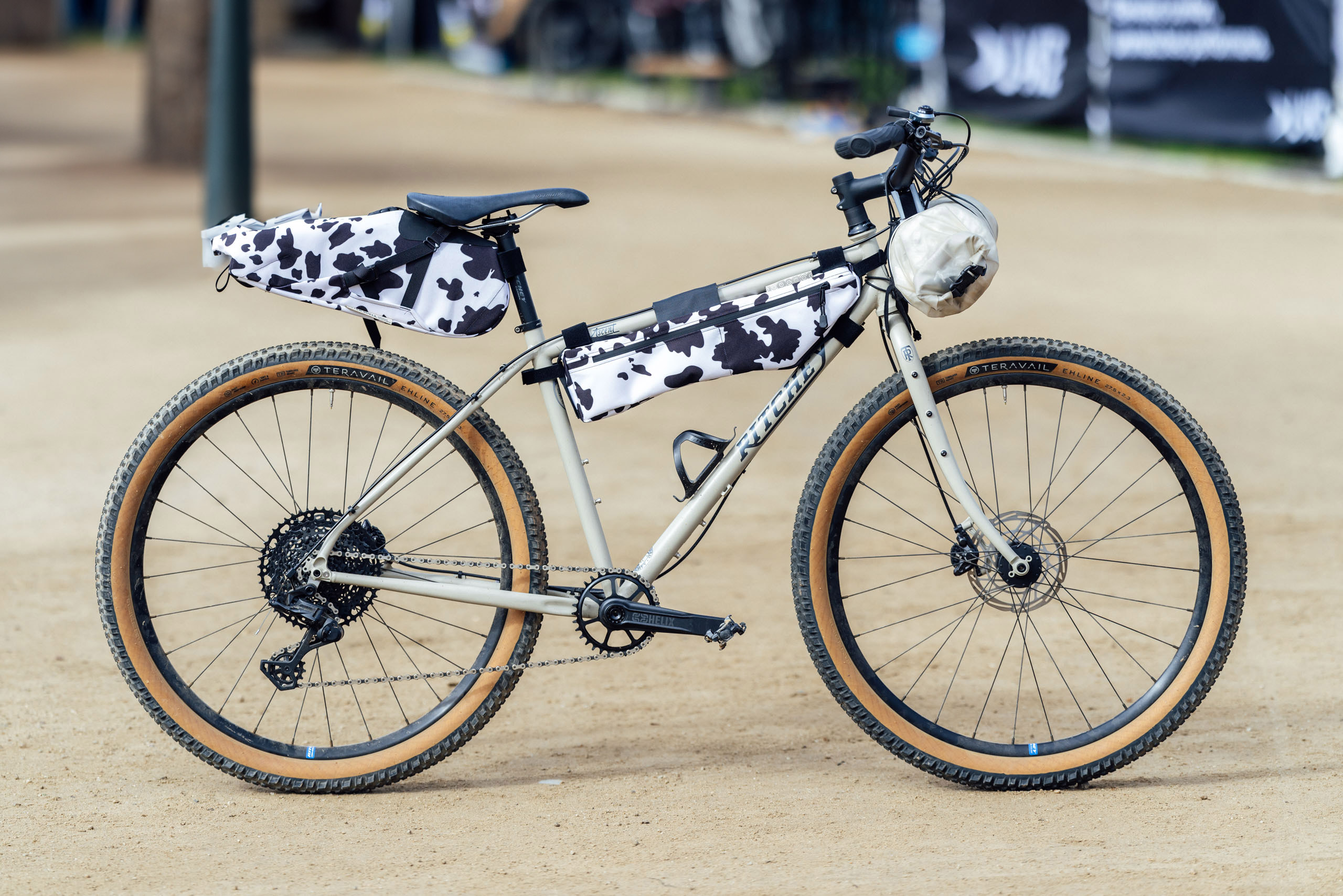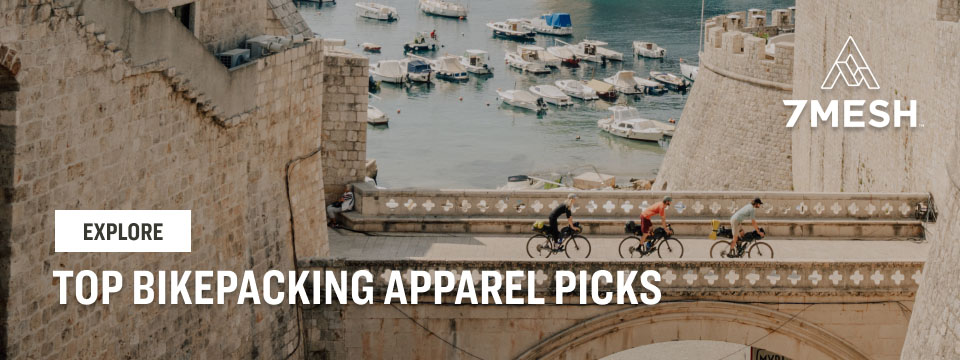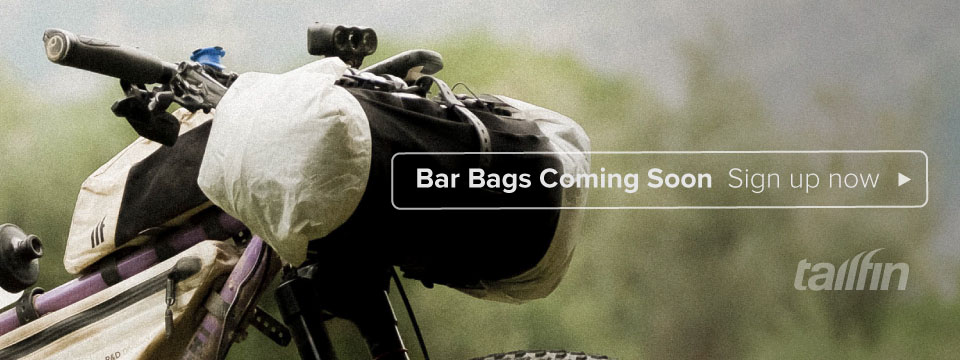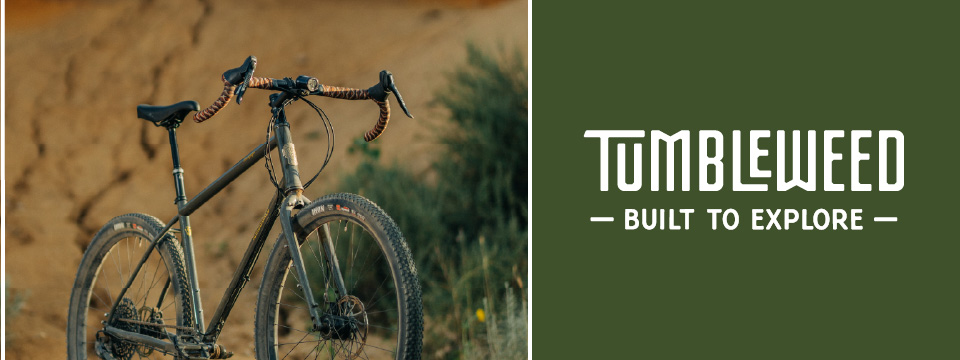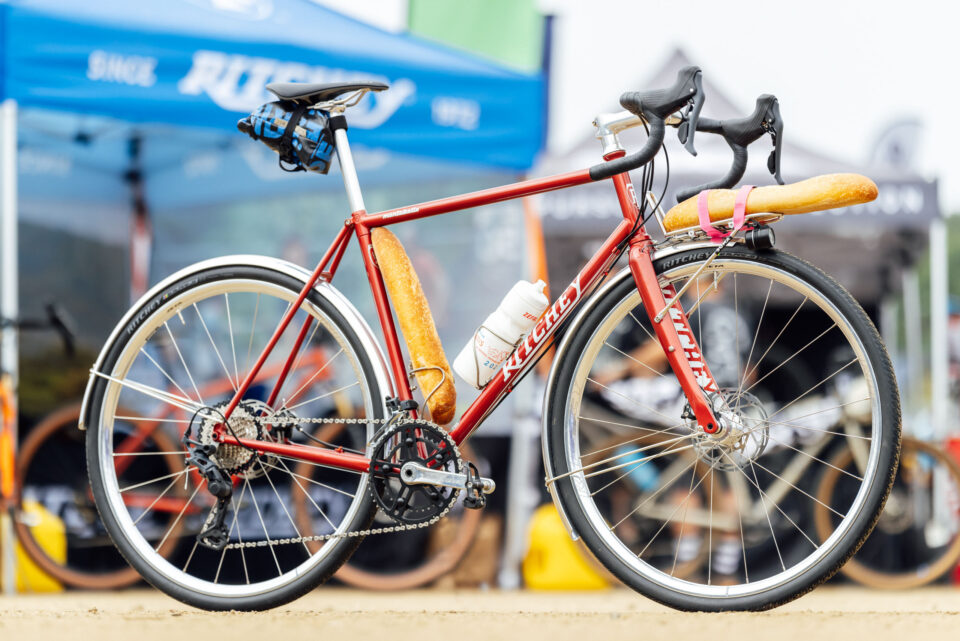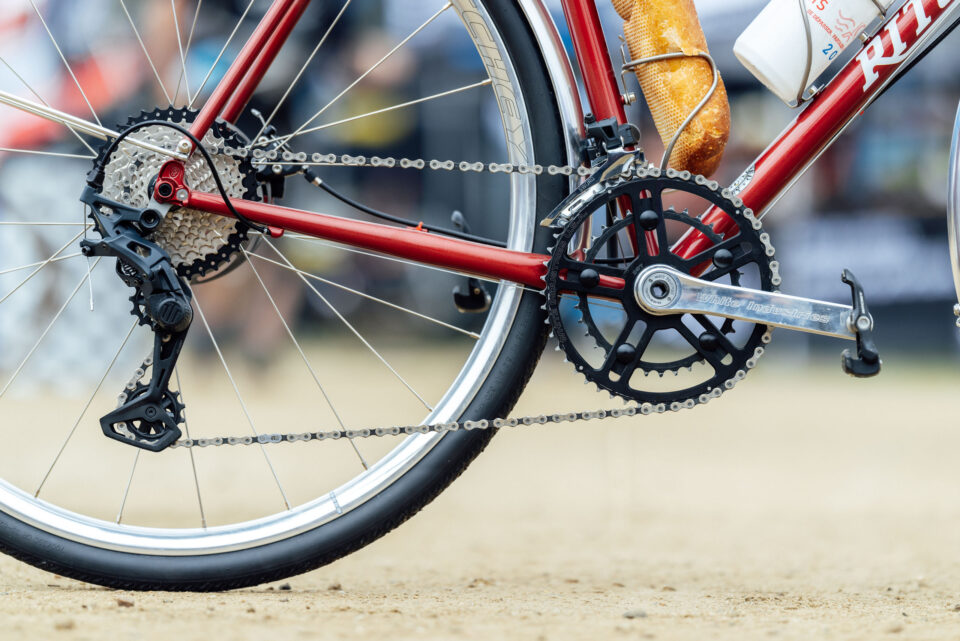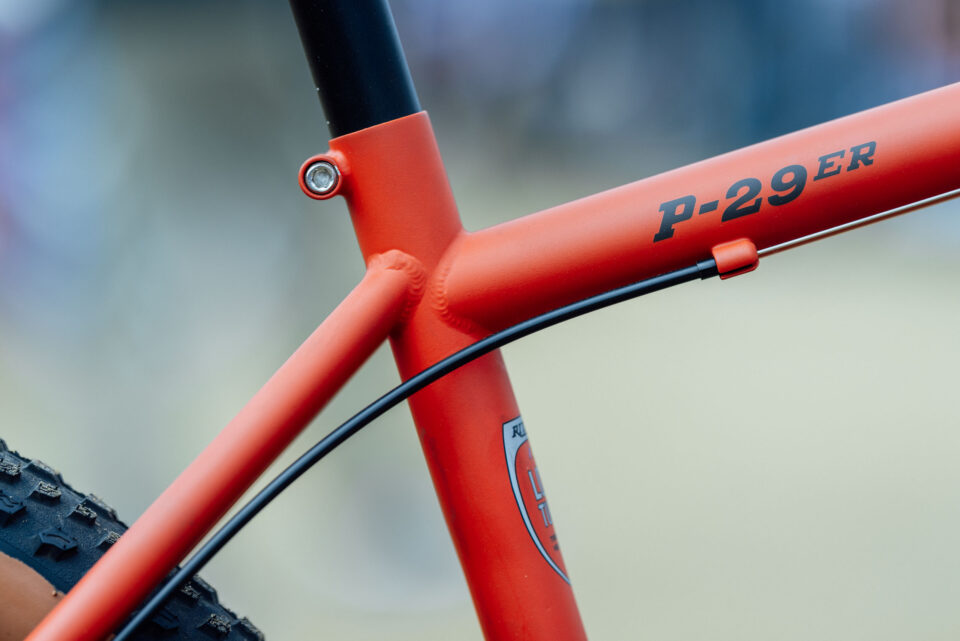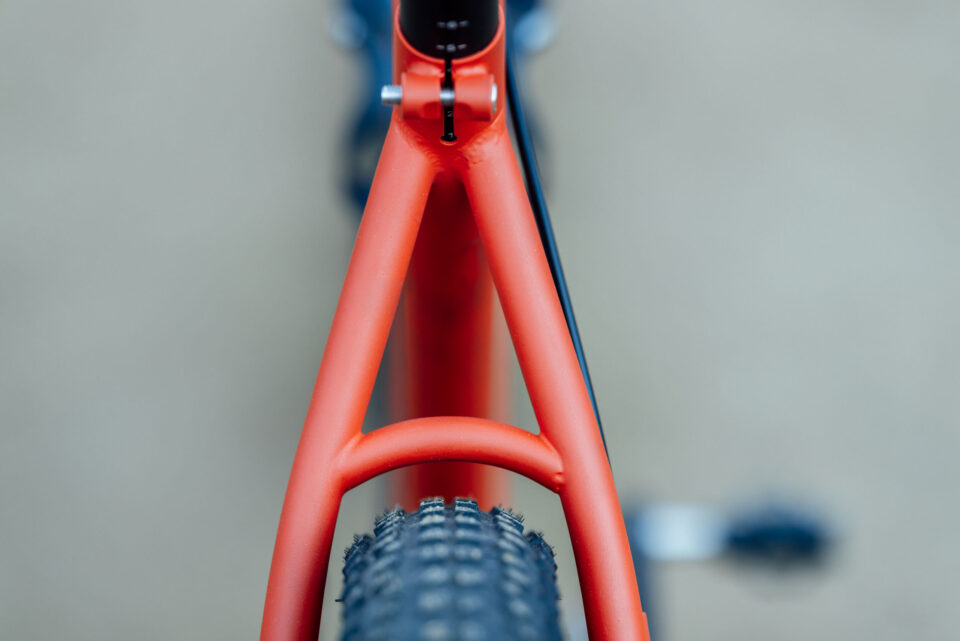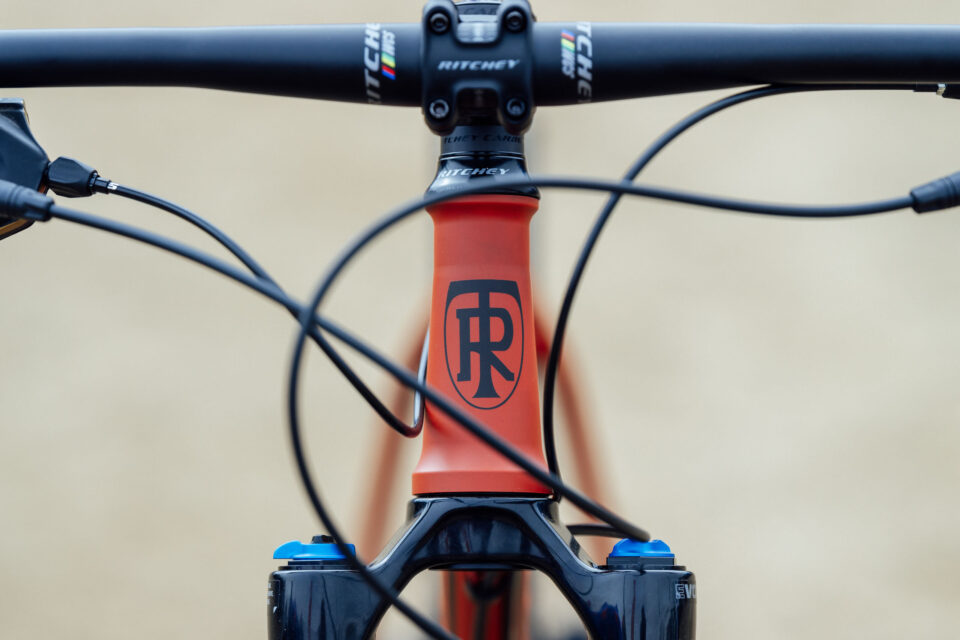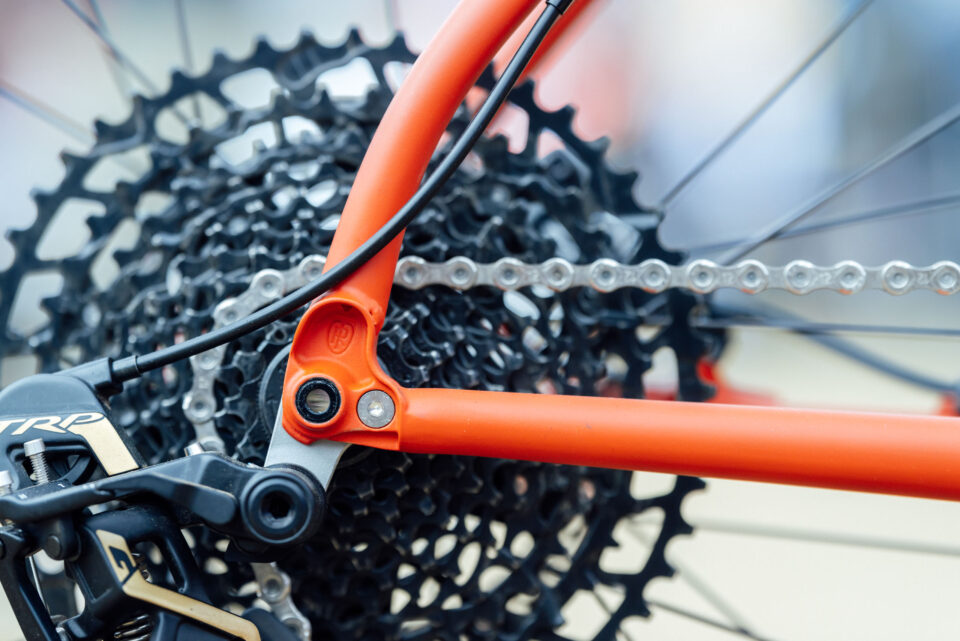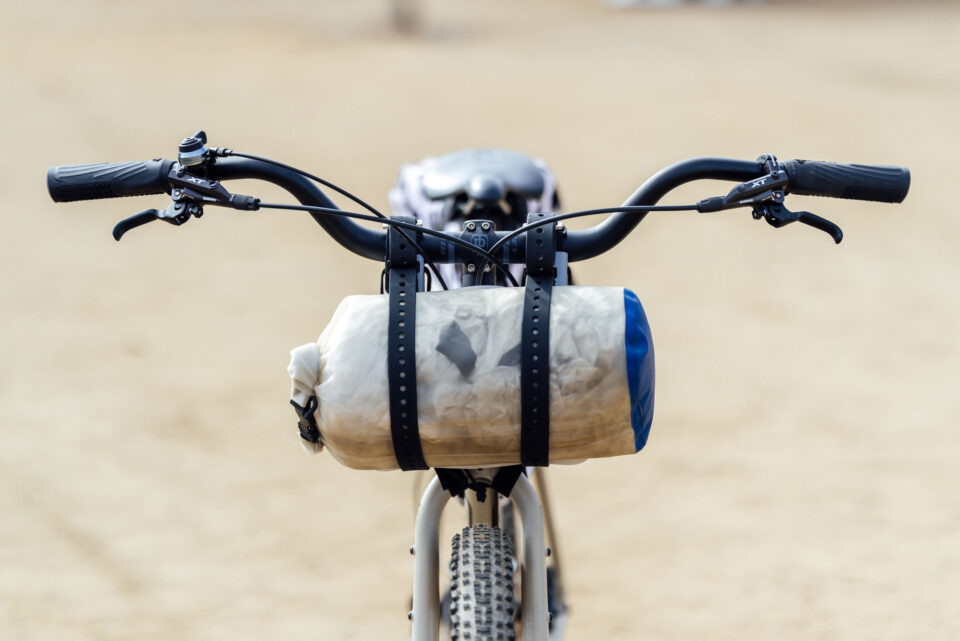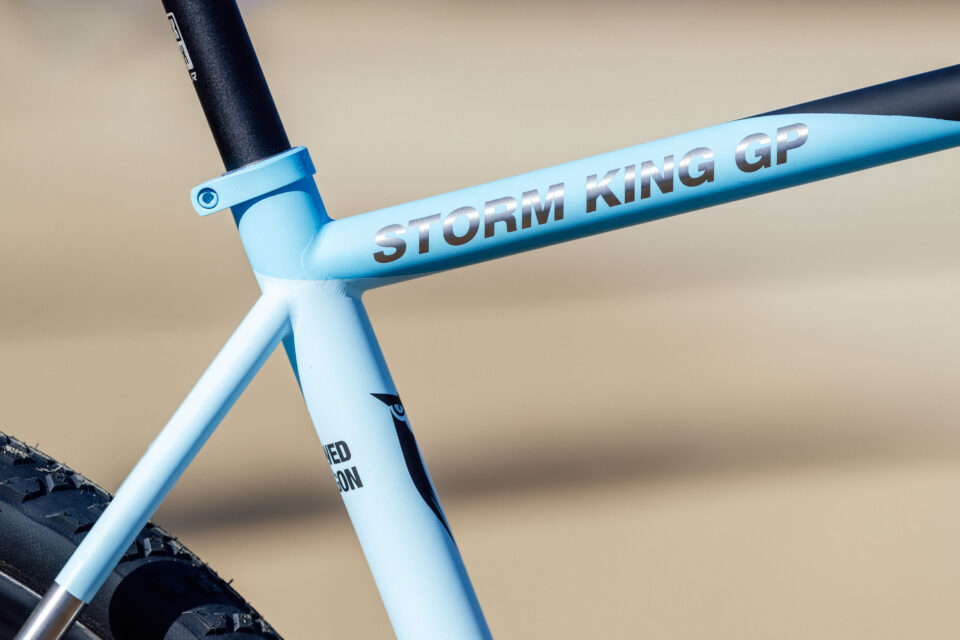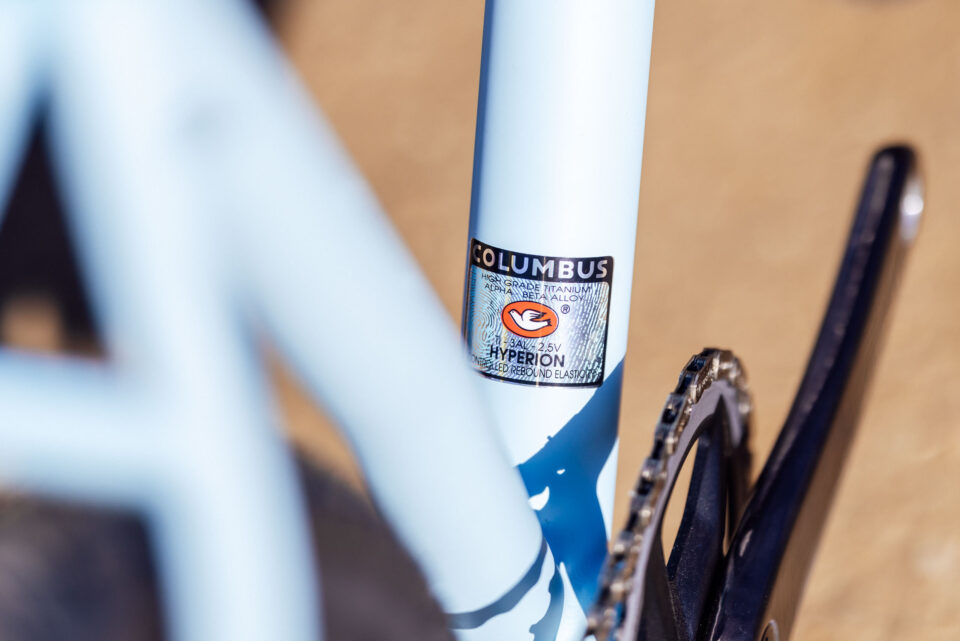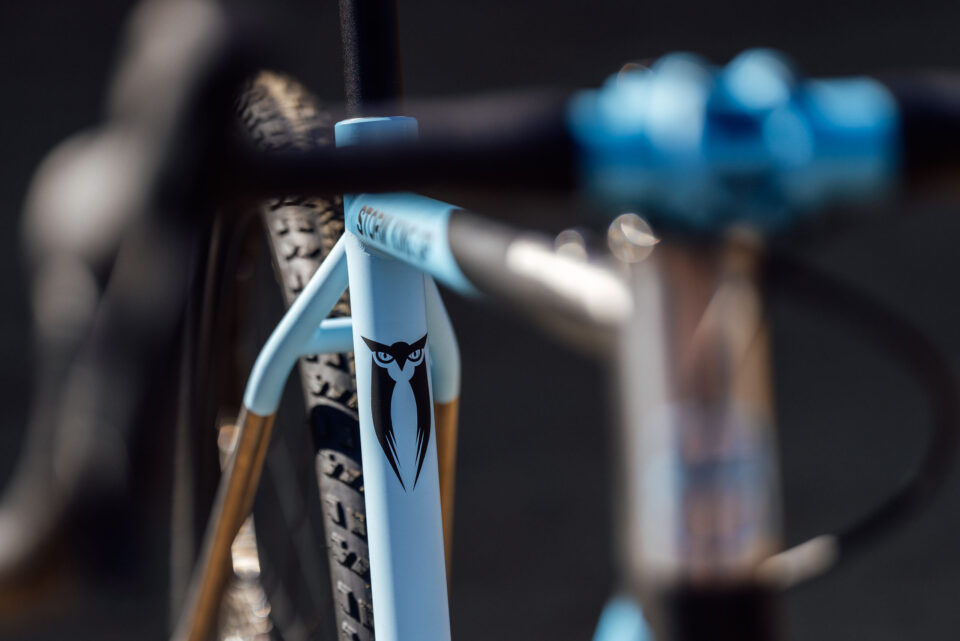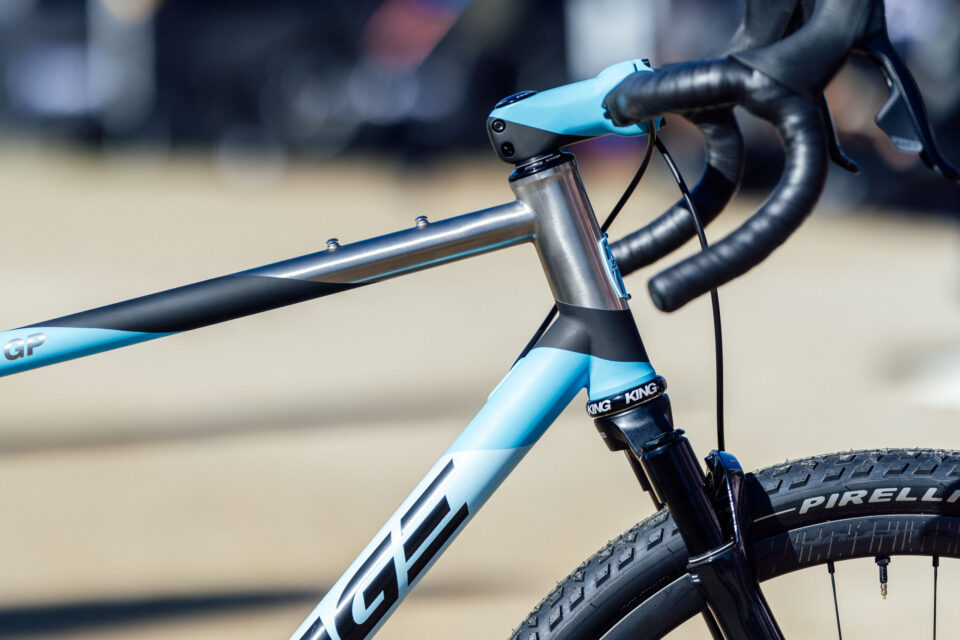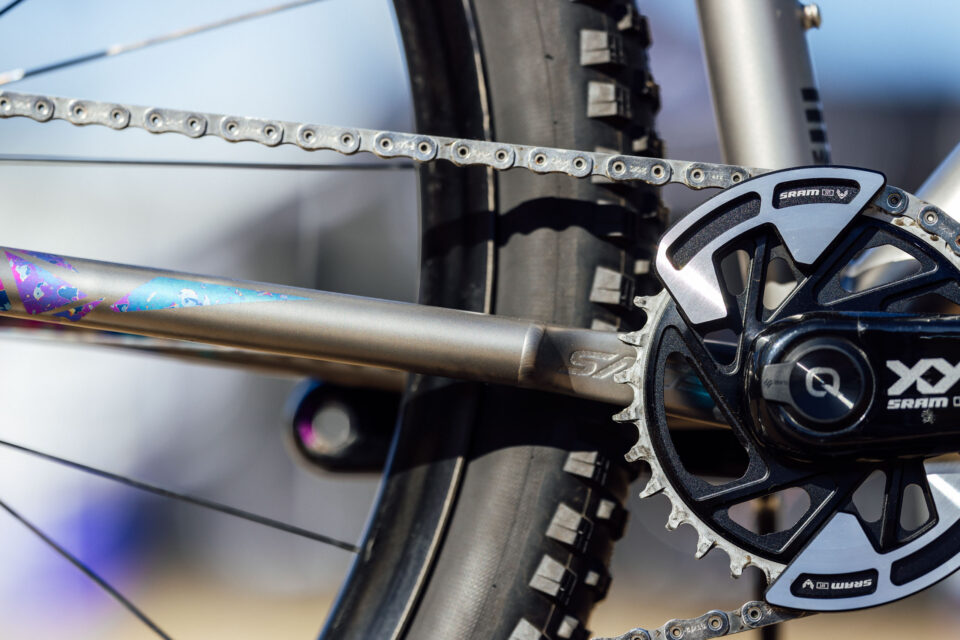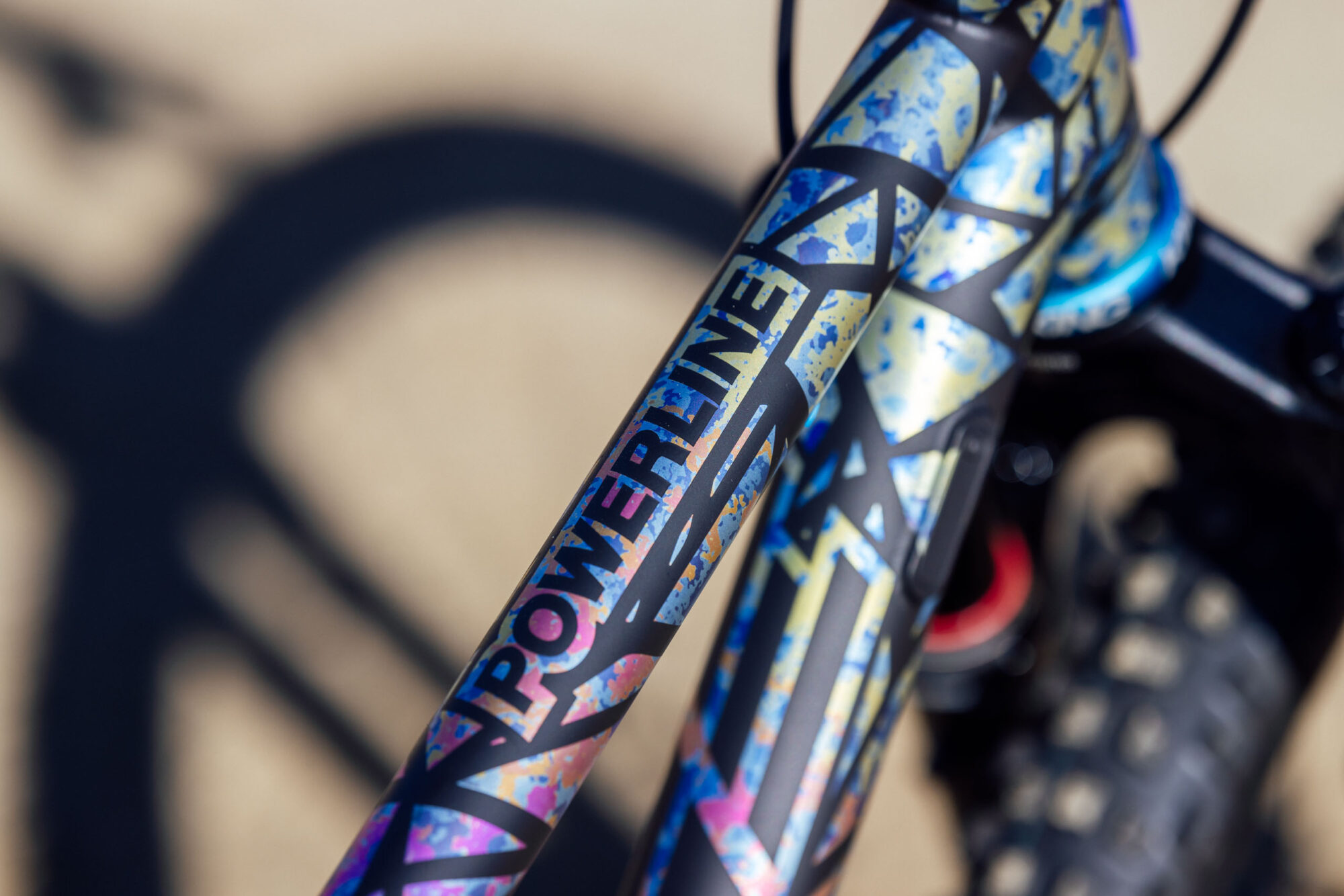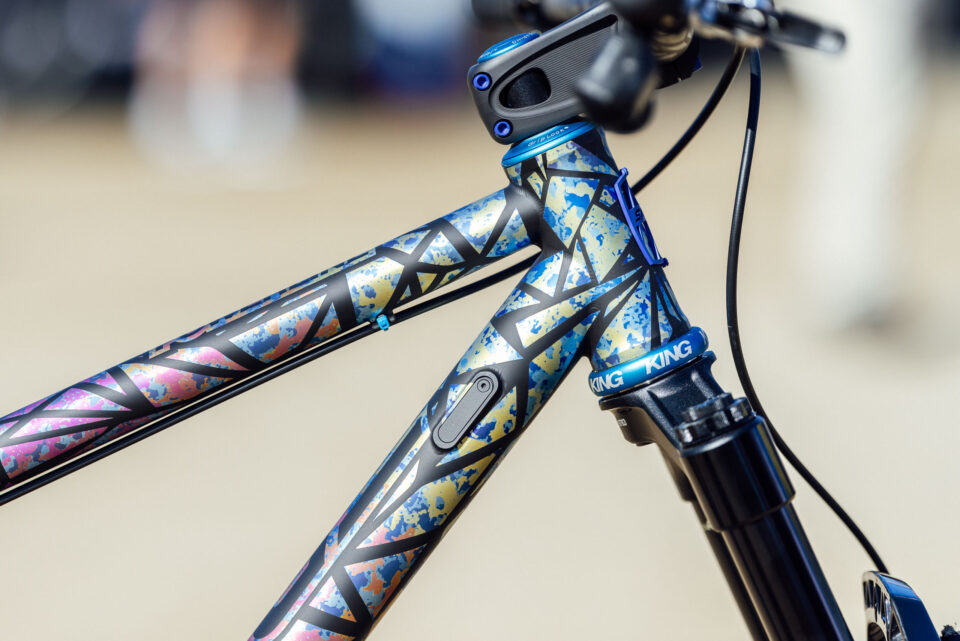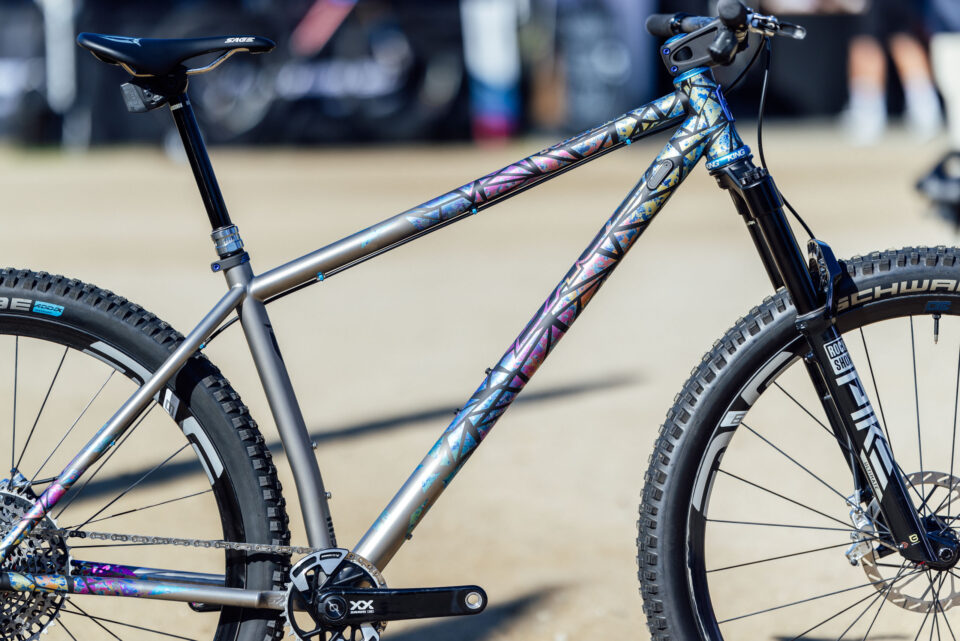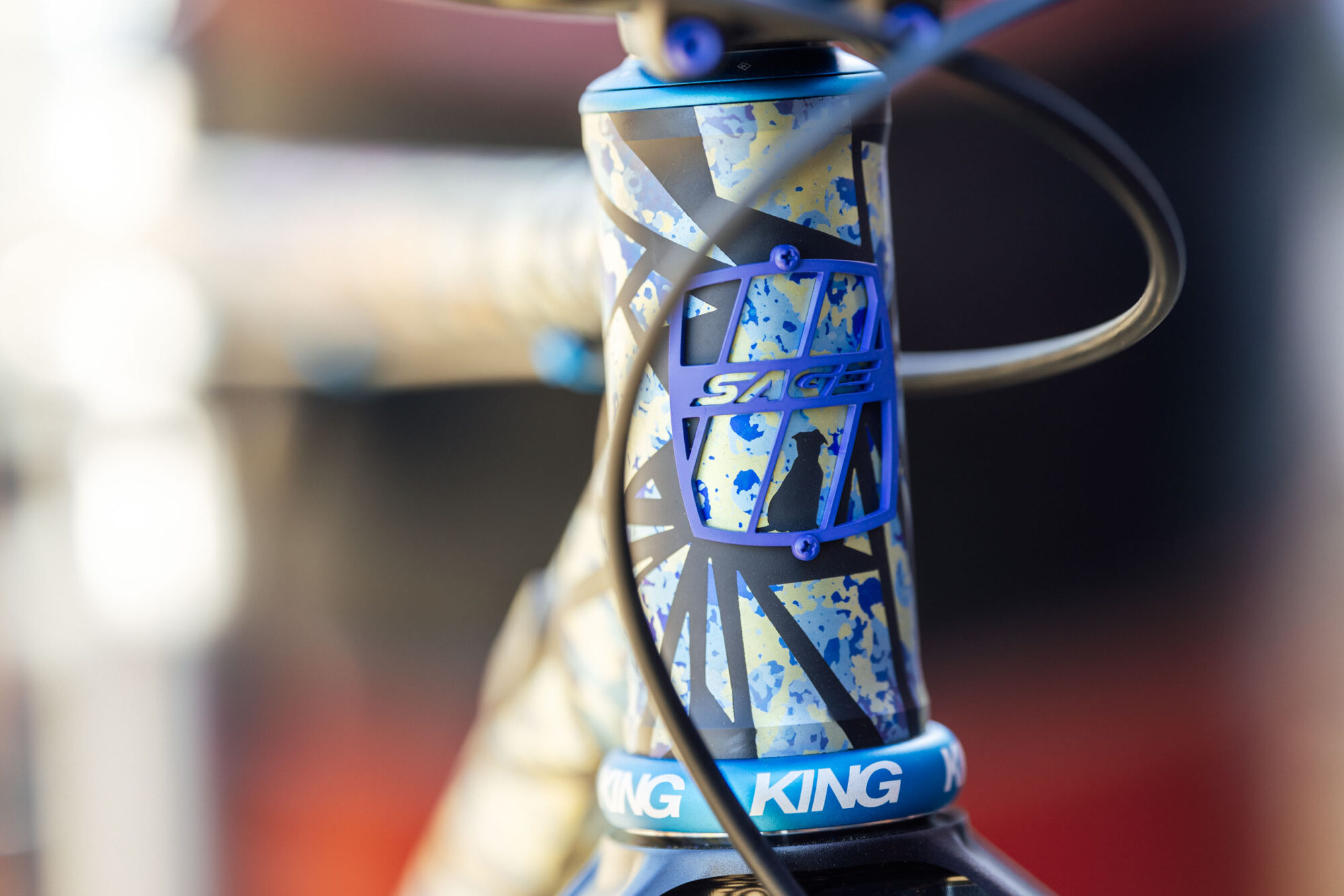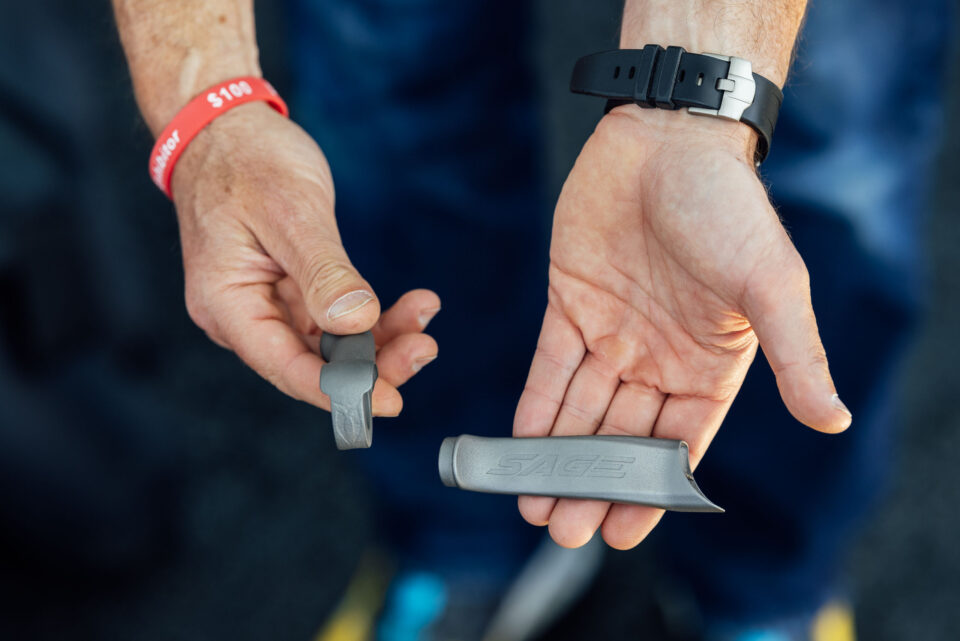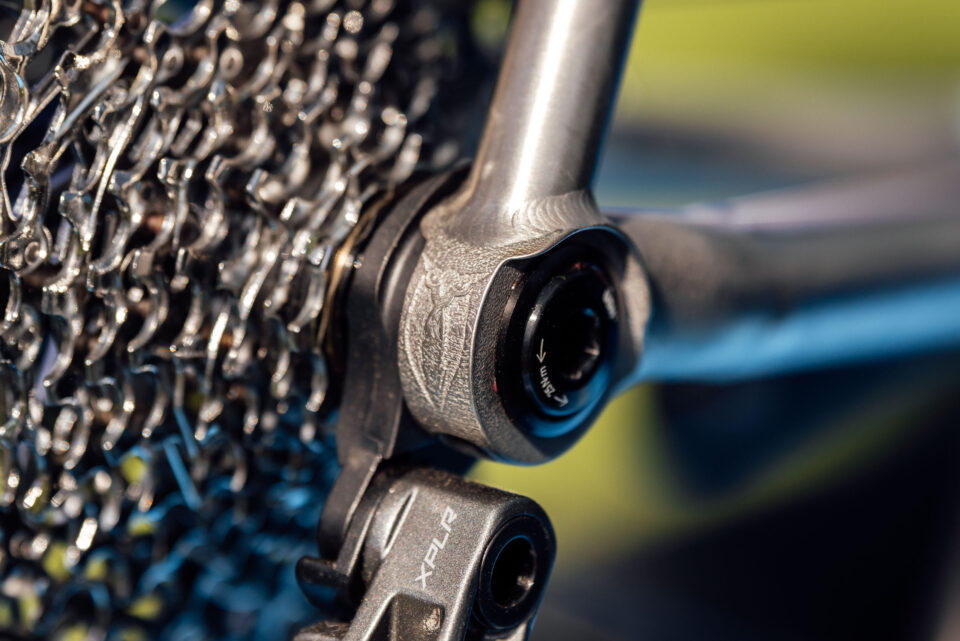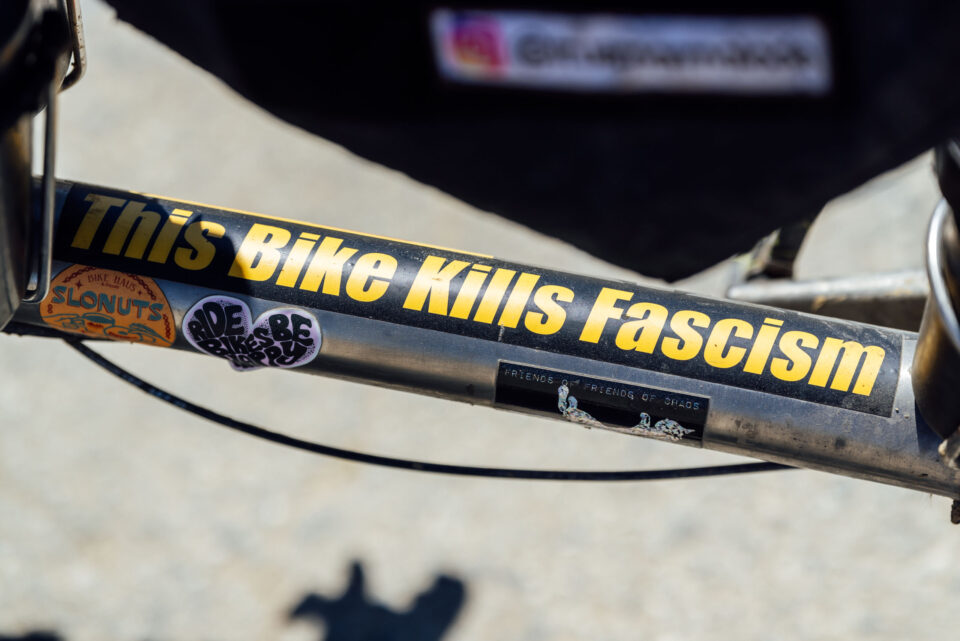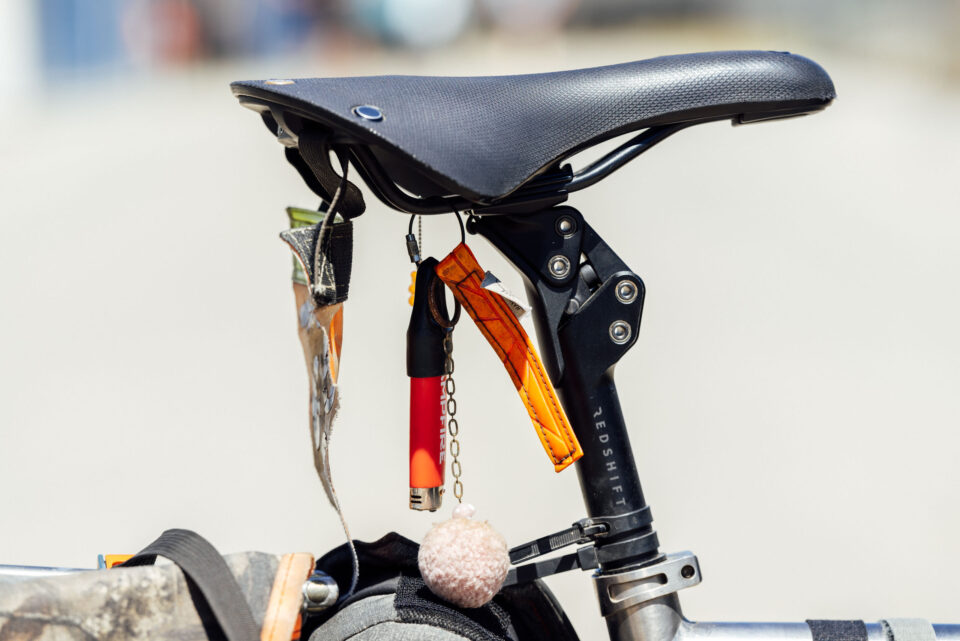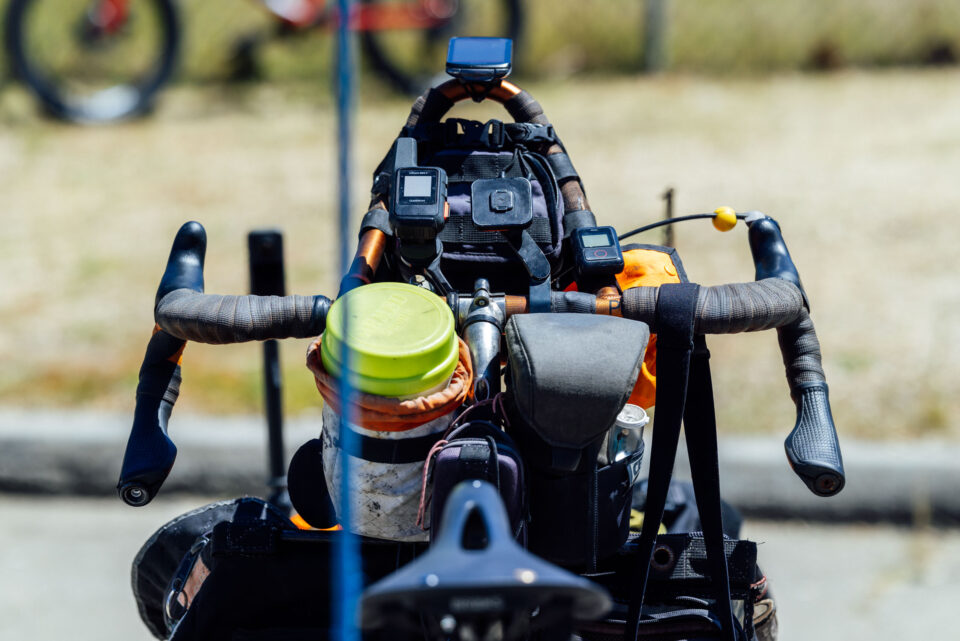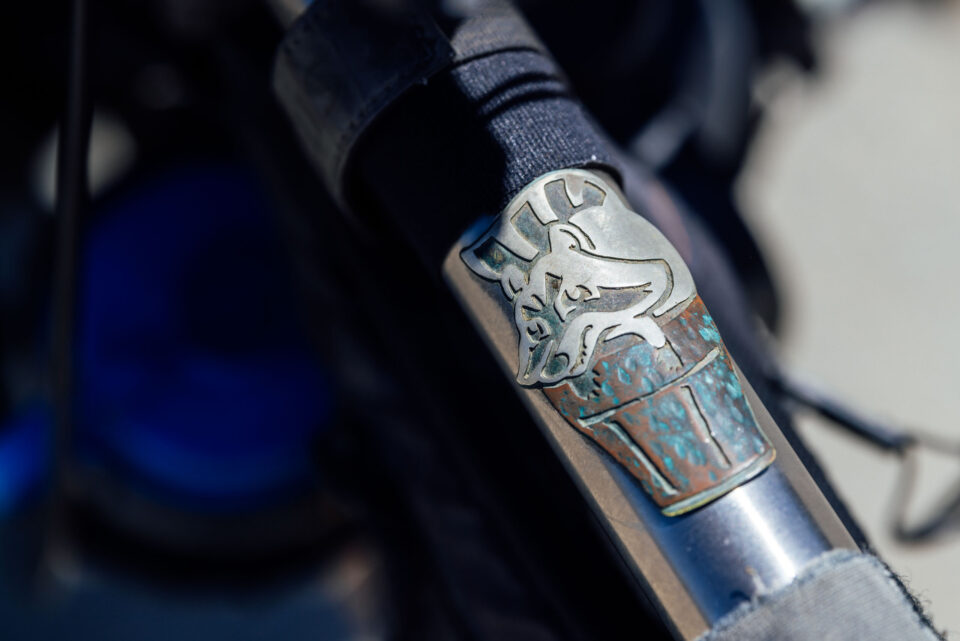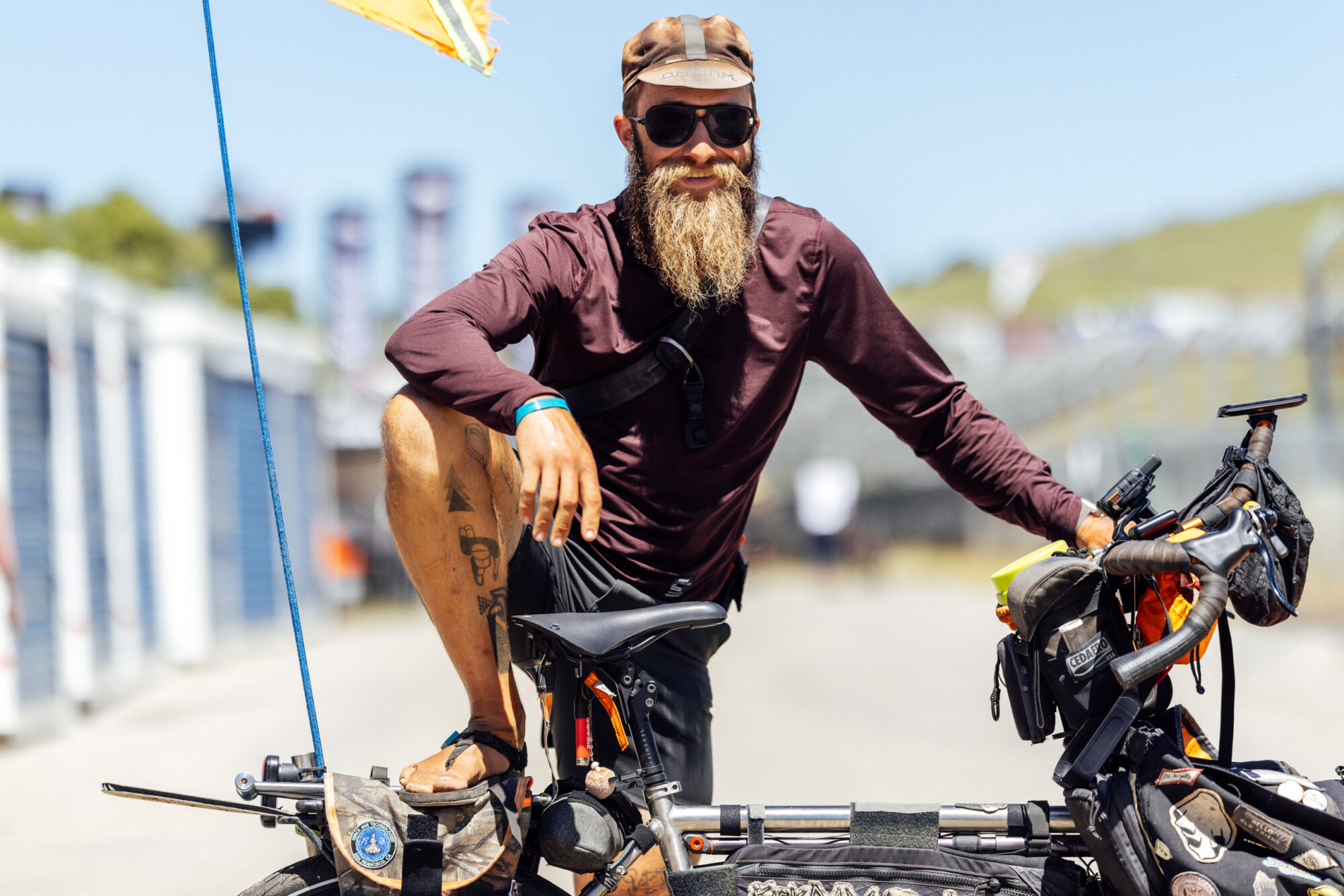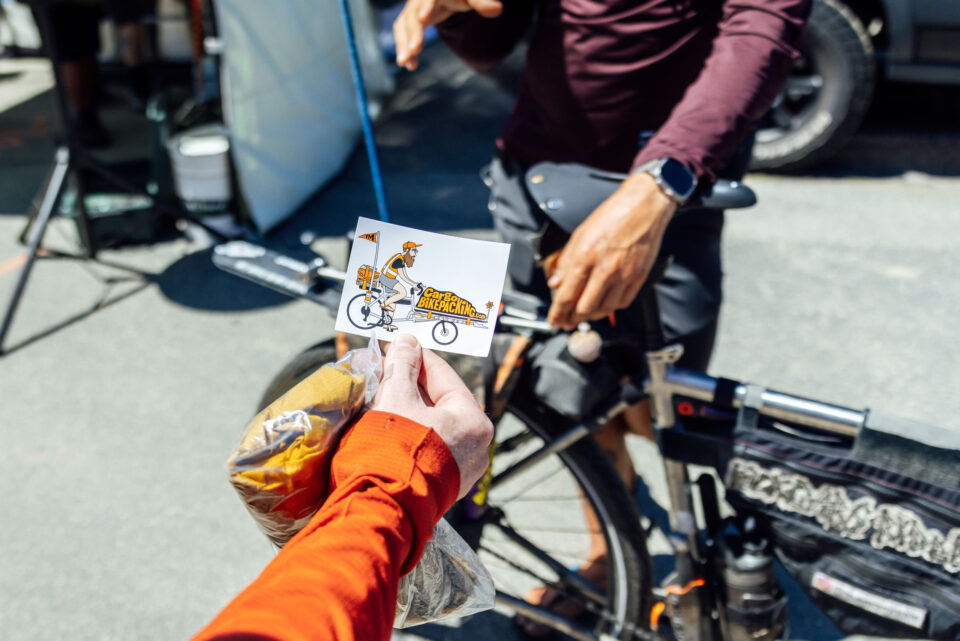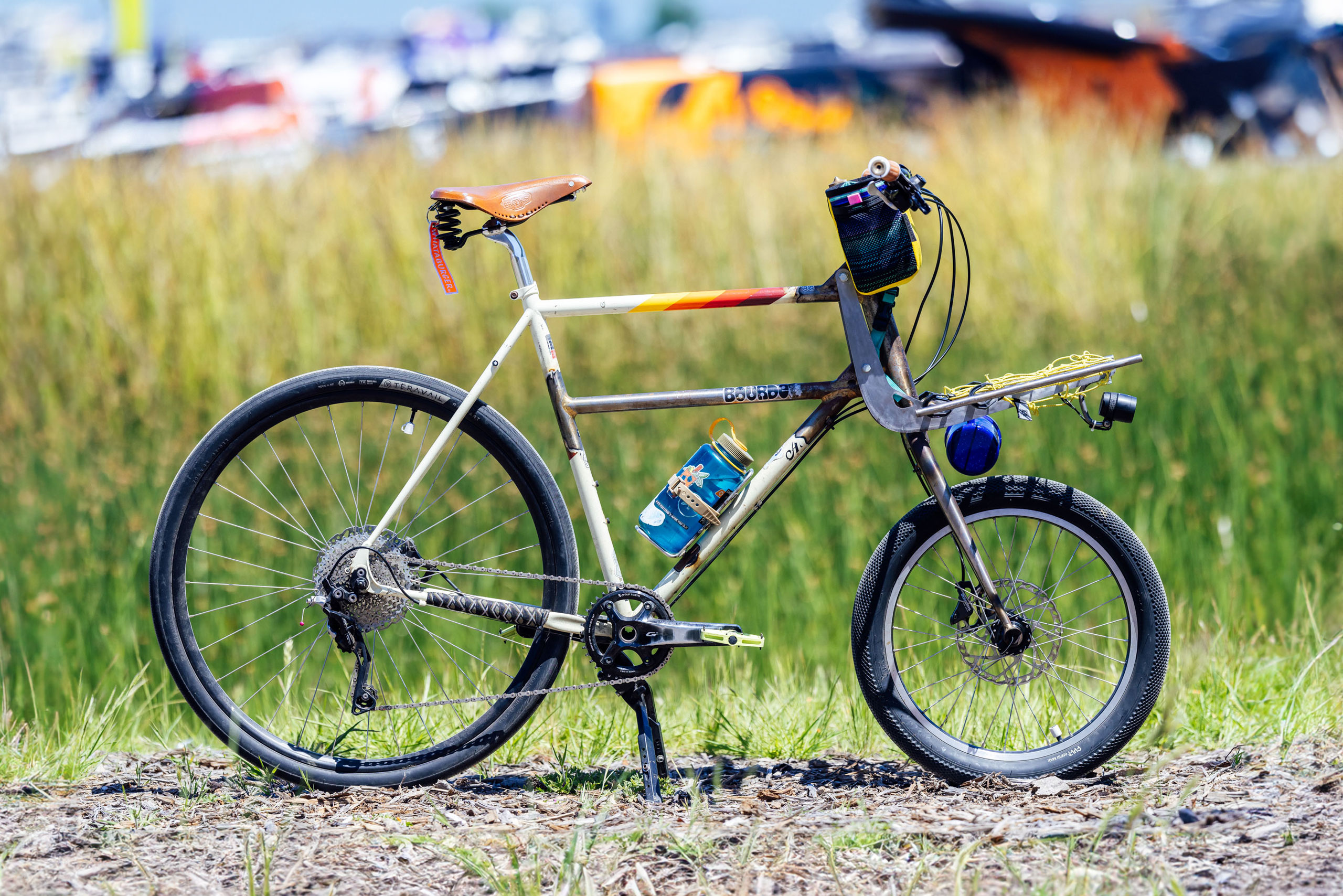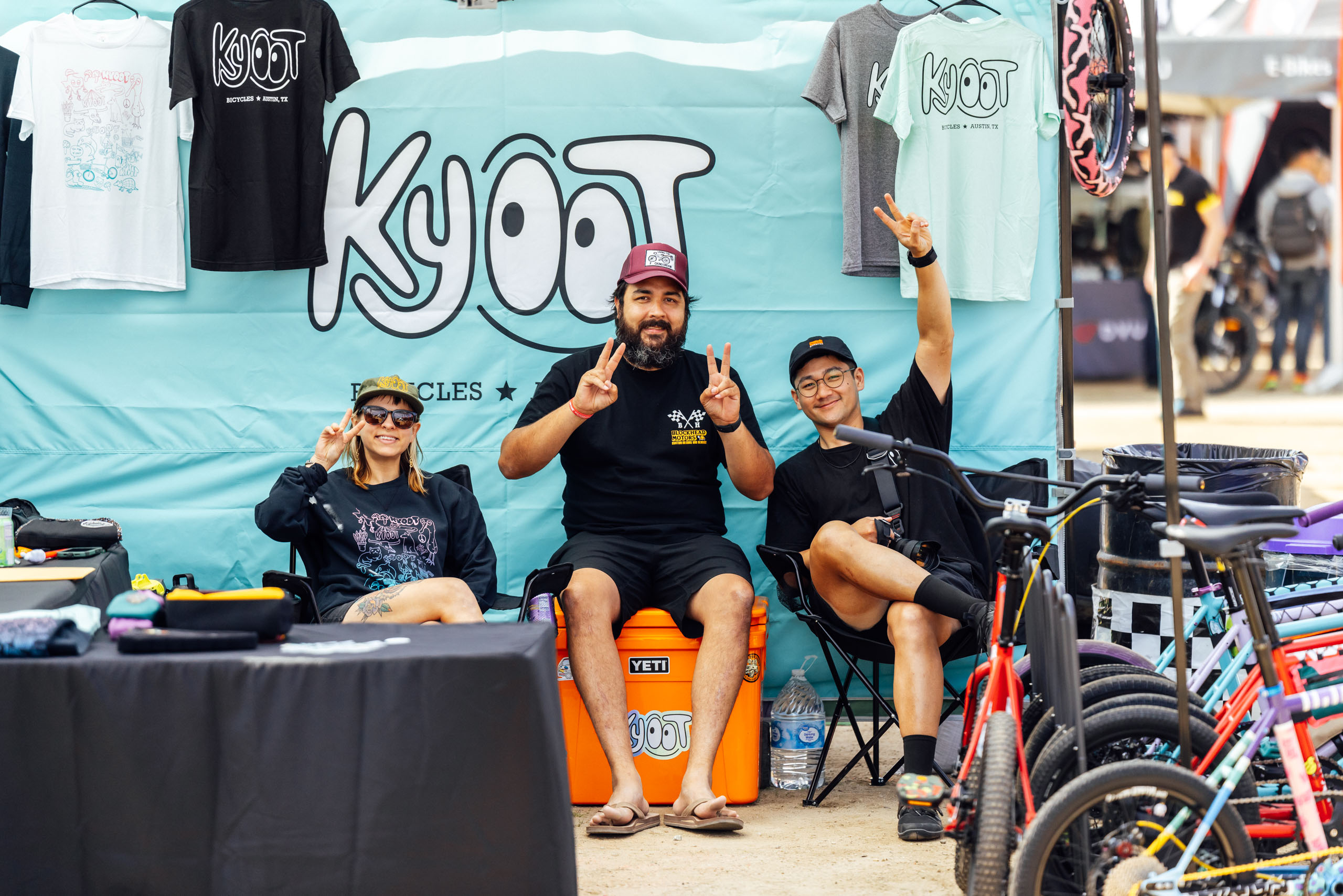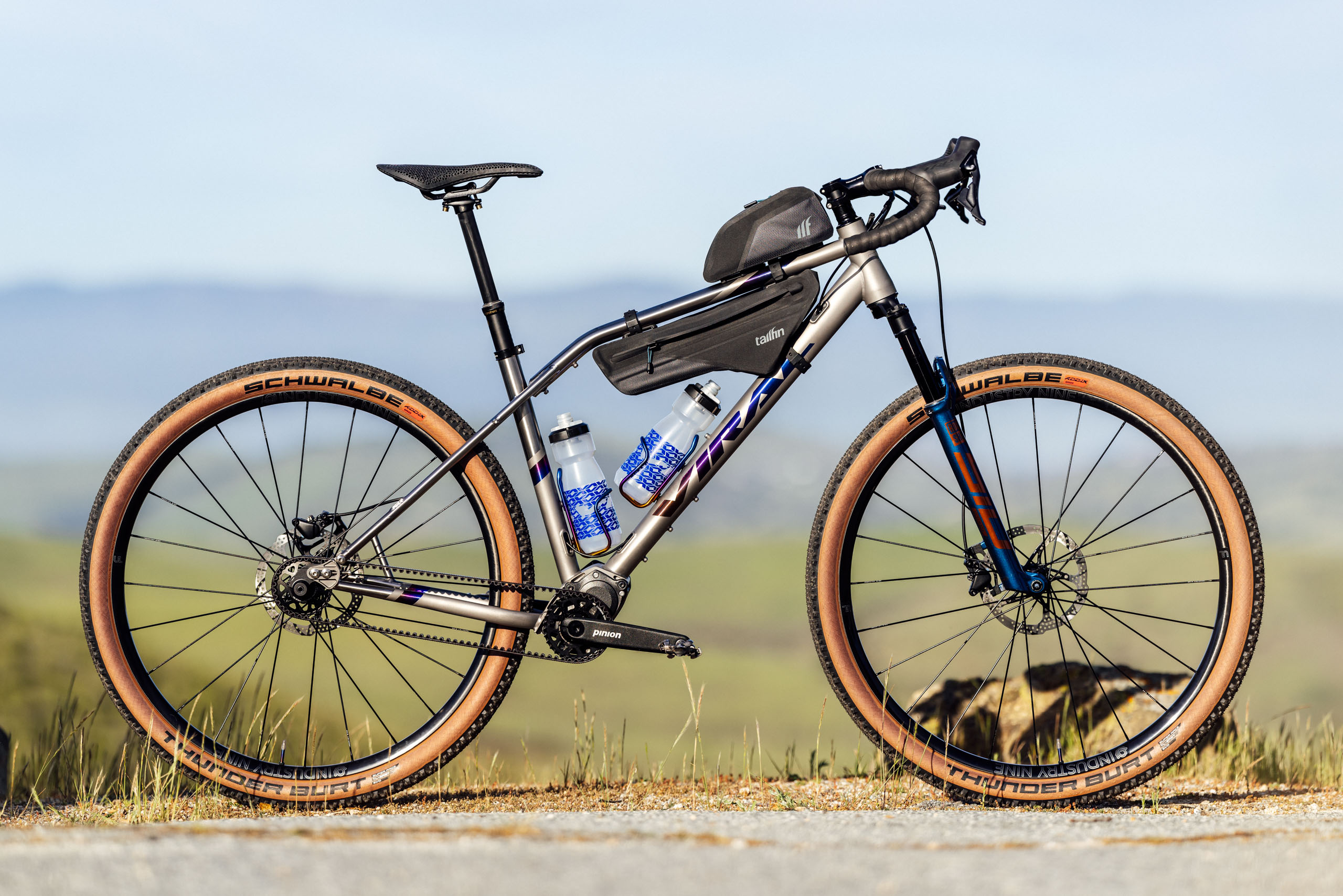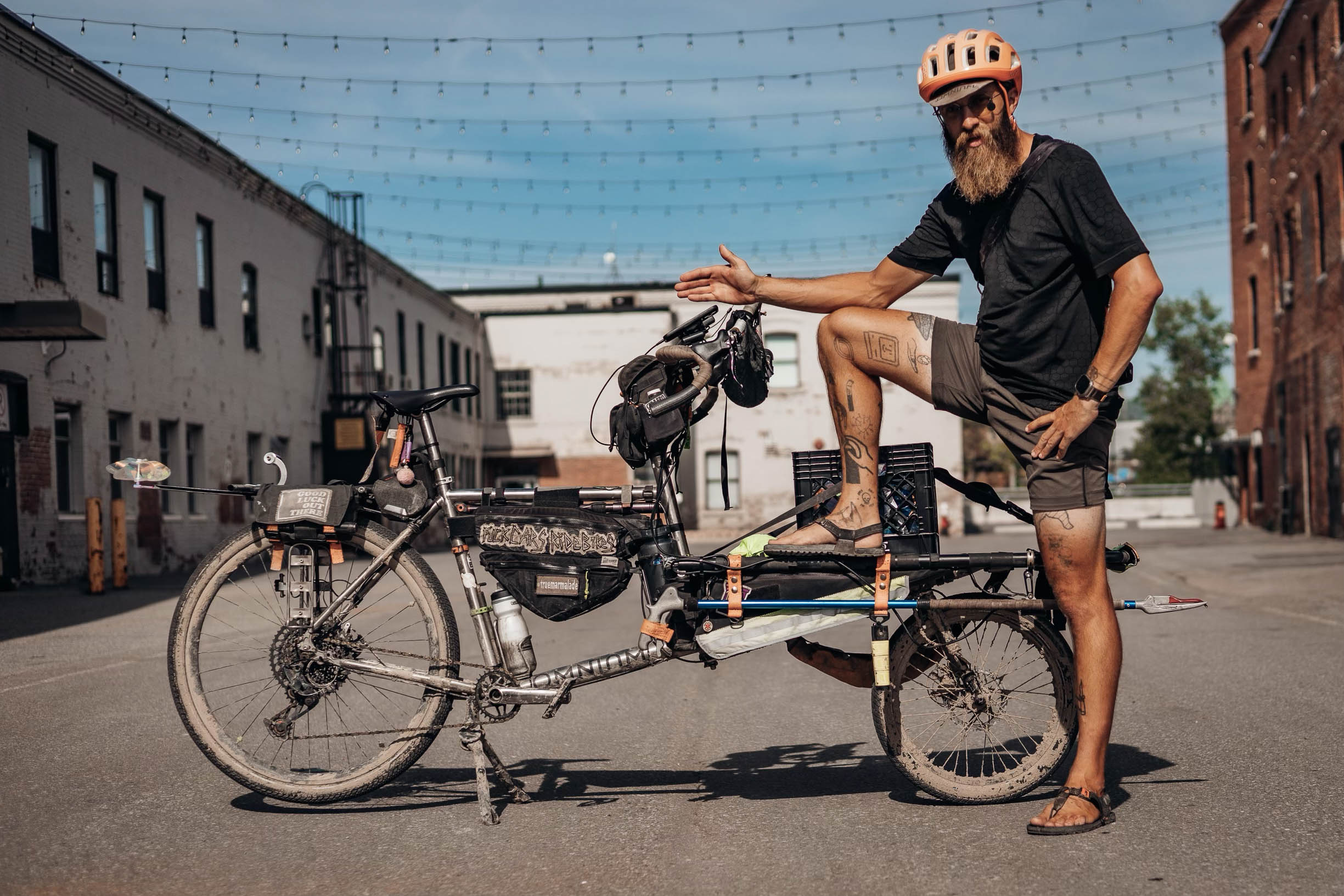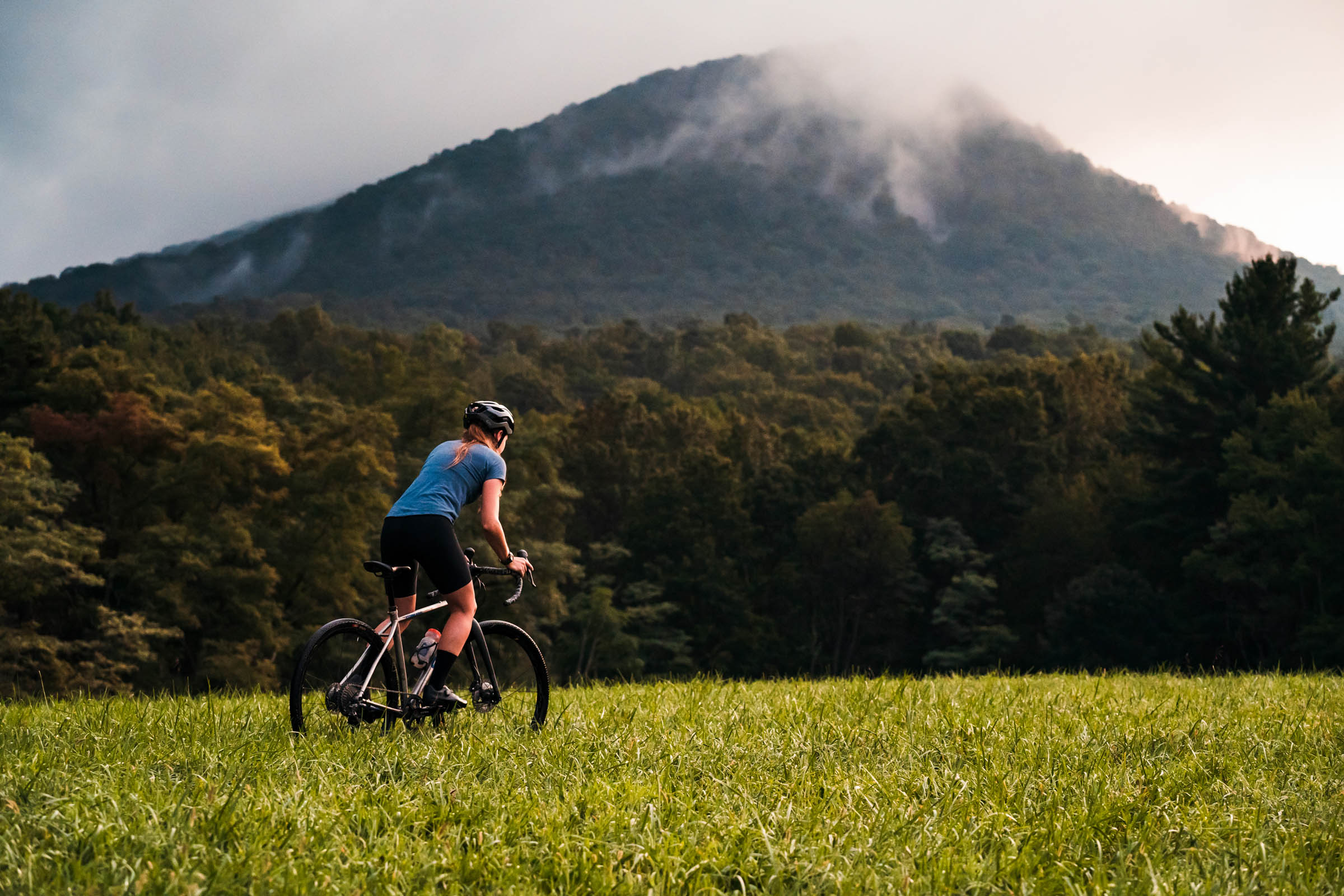Bikes of Sea Otter (Part 2): Ritchey, Truemarmalade’s Omnium, and Sage
Share This
Following several days spent roving around the grounds of this year’s Sea Otter Classic in search of interesting bikes, Logan shares six more of his favorites. Find photos and the stories behind two fresh Ritcheys, the Ti Omnium that Erik Binggeser pedaled more than 20,000 miles last year, and a pair of sublimely capable rigs from Sage here…
If you’ve ever made it to the Sea Otter Classic, you’ll know the extent of what I mean when I say it’s chaotic. There are a lot of bikes in one place during a relatively small window of time. In addition to the bikes being shown in every corner of the expo grounds, there are visitors and racers pushing and riding them everywhere. Unfortunately, that also means there are a ton of bikes I missed, such as one with a steering wheel I saw riding away from me on day two. Fortunately, I was able to catch a few of my favorites, such as the models from Ritchey and Sage below, and I managed to get Erik’s attention the third time I saw him riding around on his fully loaded Omnium. Read on for the backstory of six new and/or unique bikes I captured last weekend below.
Ritchey Montebello and P-29
I always look forward to seeing Tom Ritchey-designed frames in person. Ritchey has a penchant for classic lines and nice details that harken back to the bygone days of mountain biking and the sport’s heritage. This year, Ritchey Logic launched two new frames just before the show and had them on display. I stopped by early Saturday morning to get a few photos and chat with Fergus, Bailey, and Simon (left to right below).

Ritchey Montebello
The Ritchey Montebello lured me in first with its rack-mounted baguettes. Who could resist a bike photo featuring two golden French breads in the morning sunlight? The inspiration for this setup actually came from Fergus’ ride on a prototype Montebello in the grueling 1,200-kilometer Paris-Brest-Paris (PBP) last summer, although he admitted that he tried to eat a baguette to maintain energy along the route but it was too tough to get down. Our conversation turned to endurance cycling food preferences after that, and we both agreed that pizza was also difficult to digest on big rides. At any rate, the bread-packing Ritchey Montebello pictured here is purpose-built for randonneuring, which perfectly fits the bill for PBP, the most famous event of them all.
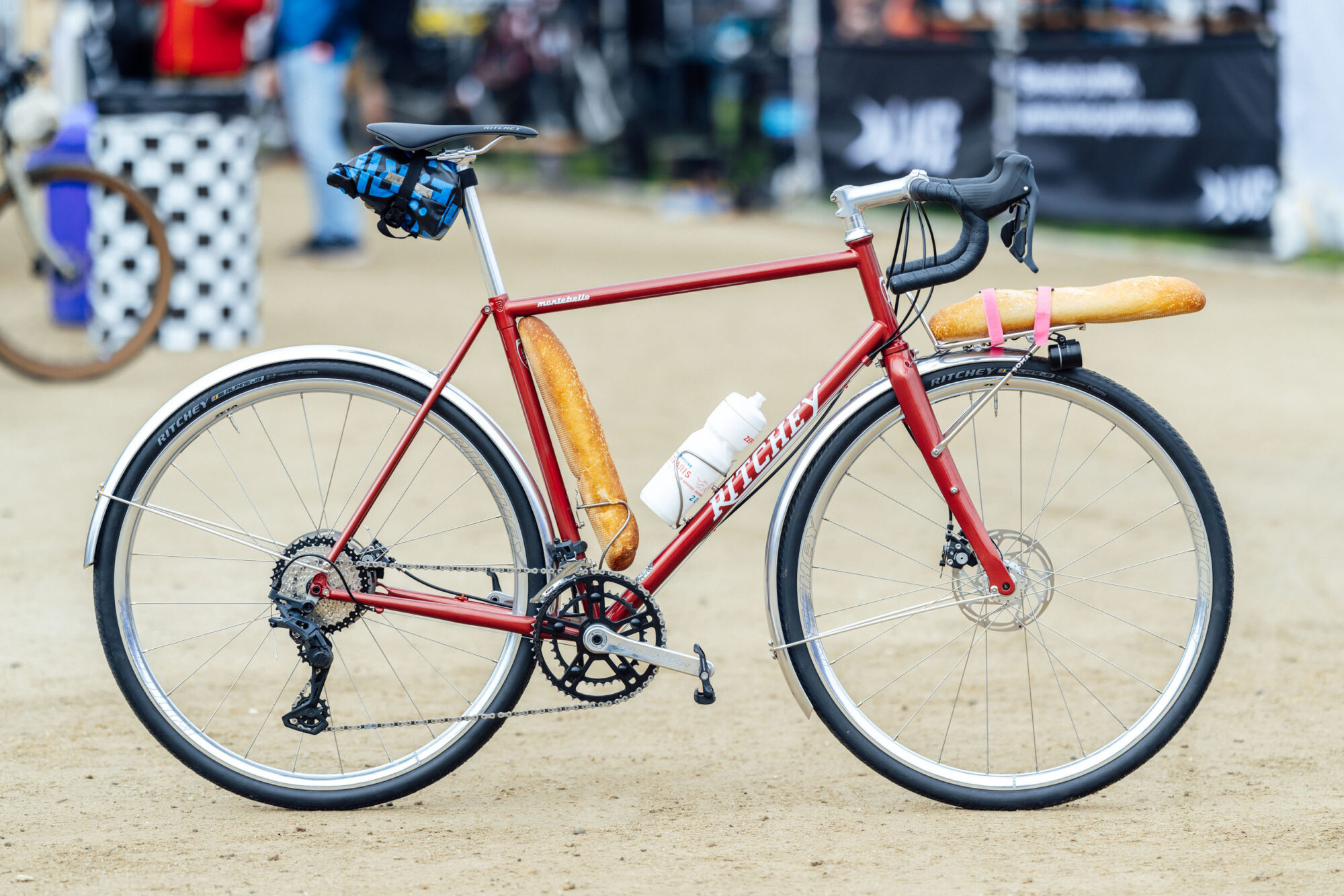
Fergus received the prototype just 10 days before heading to the PBP, which he finished in an impressive 66 hours. After that he tackled the Flandrien Challenge on the same bike, as well as quite a few gravel rides and a recon ride for the UCI EU Gravel championship. Ritchey made a couple changes to the frame after that, so the one on display at Sea Otter was a little different—perhaps influenced from Fergus’ experiences on it. If you missed it, be sure to check out Ryan Le Garrec’s Seven Shots with Fergus Tanaka, which features a sneak peek of the Montebello. The final version landed on the geometry that’s shared below (since the bike isn’t on their website yet). It comes in an impressive array of six sizes from XS to XXL.
| Frame Size | XS | S | M | L | XL | XXL |
|---|---|---|---|---|---|---|
| Top tube (effective) | 528 | 544 | 560 | 575 | 587 | 602 |
| Top tube (actual) | 514 | 528 | 543 | 558 | 571 | 587 |
| Seat tube (c-t) | 465 | 490 | 515 | 540 | 570 | 600 |
| Seat tube angle | 75 | 74.5 | 74 | 73.5 | 73.5 | 73.5 |
| Head tube length | 120 | 140 | 160 | 180 | 200 | 220 |
| Head tube angle | 71 | 71.5 | 72 | 72 | 72.5 | 72.5 |
| BB drop | 80 | 80 | 80 | 78 | 78 | 78 |
| Chainstay | 429 | 429 | 429 | 429 | 429 | 429 |
| Wheelbase | 1015 | 1022 | 1029 | 1039 | 1047 | 1062 |
| Standover height | 756 | 778 | 800 | 822 | 847 | 871 |
| Stack | 551 | 572 | 593 | 610 | 631 | 650 |
| Reach | 380 | 385 | 390 | 394 | 400 | 409 |
| Axle to crown | 388 | 388 | 388 | 388 | 388 | 388 |
| Fork rake | 48 | 48 | 48 | 48 | 48 | 48 |
| Post diameter | 27.2 | 27.2 | 27.2 | 27.2 | 27.2 | 27.2 |
Ritchey positions the Montebello as “not just another road bike” with a purposeful geometry made for a stable ride on long all/multi-day efforts. It has increased stack, a longer wheelbase, and a lower bottom bracket than its Road Logic sibling.

The Montebello frame is TIG welded in Taiwan from heat-treated, triple-butted Ritchey Logic steel tubing. It has 12mm thru-axles in front and rear, rack and fender mounts, and clearance for 700c x 36mm tires with fenders or 40mm without. The frame also comes with the Ritchey WCS Carbon Brevet Fork that has a 1 1/8” straight steerer, a pair of bottle mounts on each leg, internal dynamo wire routing, and mounts for a porteur or low-rider rack.
The Ritchey Montebello frameset should have the same price tag as the Outback at $1,599, and it comes with a WCS headset in just one “Hot Sauce” color. The size 55cm weighs 1,750 grams, and the Brevet fork is 350 grams uncut.
Ritchey P-29er
The other new bike Ritchey had on display was the brand-new P-29er. The P-29er bike has two-and-a-half decades of P-series heritage behind it at this point. Ritchey P-series “project” bikes started around 1990, just around the time the UCI officially recognized the mountain bike World Championships, and have been XC-race-orientated ever since.
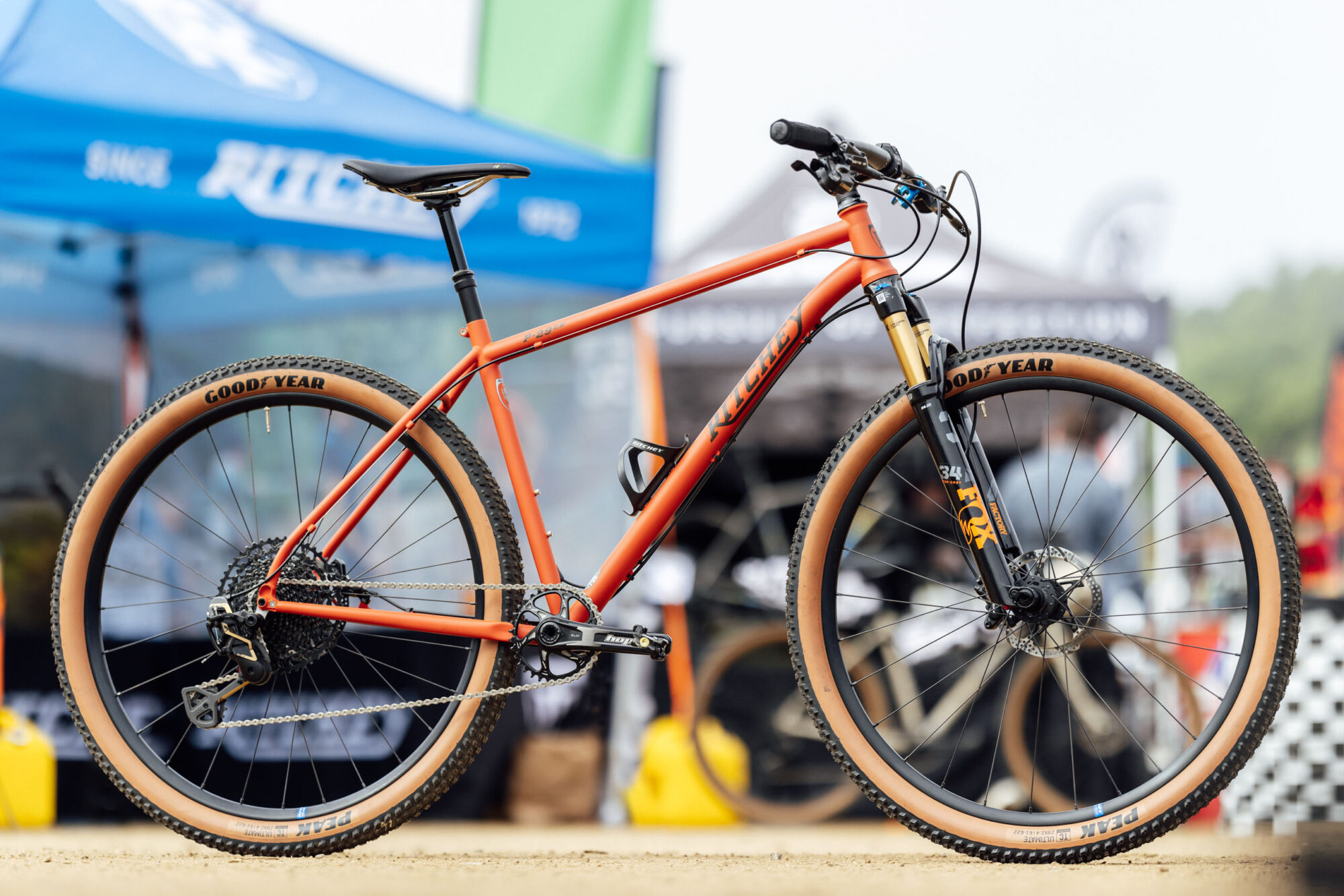
According to Ritchey, the latest P-29er was “designed for ripping tight, twisty, and technical cross-country singletrack.” The P-29er frame is built with Ritchey’s proprietary triple-butted Logic steel tubing and comes in one color, “Dirt in Blood,” which, in my humble opinion, is hard to beat as far as color naming goes. Ritchey claims that this particular tubeset, combined with the P-29er’s modern XC geometry, have a “snappy and responsive balanced ride and a comfortable and predictable personality.”
| Frame Size | S | M | L | XL |
|---|---|---|---|---|
| Toptube (effective) | 564 | 573 | 590 | 613 |
| Toptube (actual) | 575 | 592 | 612 | 634 |
| Seat tube (c-t) | 380 | 431 | 483 | 533 |
| Seat tube angle | 74 | 74 | 74 | 74 |
| Headtube length | 100 | 105 | 115 | 130 |
| Headtube angle | 69 | 69.5 | 69.5 | 69.5 |
| BB drop | 60 | 60 | 60 | 60 |
| Chainstay | 440 | 440 | 440 | 440 |
| Wheelbase | 1098 | 1110 | 1131 | 1154 |
| Standover height | 760 | 787 | 817 | 847 |
| Stack | 589 | 595 | 605 | 619 |
| Reach | 406 | 421 | 438 | 456 |
| Axle to crown | 481 | 481 | 481 | 481 |
| Fork rake | 50 | 50 | 50 | 50 |
| Post diameter | 27.2 | 27.2 | 27.2 | 27.2 |
The P-29er is has a few modern touches, including Boost spacing, internal dropper post routing (although still a 27.2mm seatpost), and a beautifully forged tapered headtube. It fits tires up to 2.3”, has post-mount rear brake mounts for a 160mm rotor, and is designed around a 100mm travel fork (or 500mm axle-to-crown rigid fork). The size M (17”) weighs 2,380 grams (5.25 pounds) and will set you back $999.
The two new bikes aren’t available at RitcheyLogic.com quite yet, but watch for details soon.
Sage Storm King GP and Powerline
After shooting the beautiful new Sage titanium bars I shared in the roundup on Monday, I knew I wanted to go back when the light was more forgiving to get some photos of a couple of their Beaverton, Oregon-made bikes. On the last day of the show, I was scrambling around tying up a few loose ends. After grabbing a couple shots of the Hudski, I beelined over to take a look at the Storm King GP and their 130mm hardtail, the Powerline.
Thankfully, I caught founder and designer Dave Rosen as he was walking away from the tent to chat about these bikes. For those who haven’t read Jess’ review of the Sage Storm King, Dave grew up New York City and developed a passion for cycling during the mountain biking craze of the 1980s and ’90s on the East Coast, competing in races up and down the Eastern Seaboard, from West Virginia to Vermont. In 2002, Rosen relocated to Oregon and transitioned to road cycling by joining his first team.
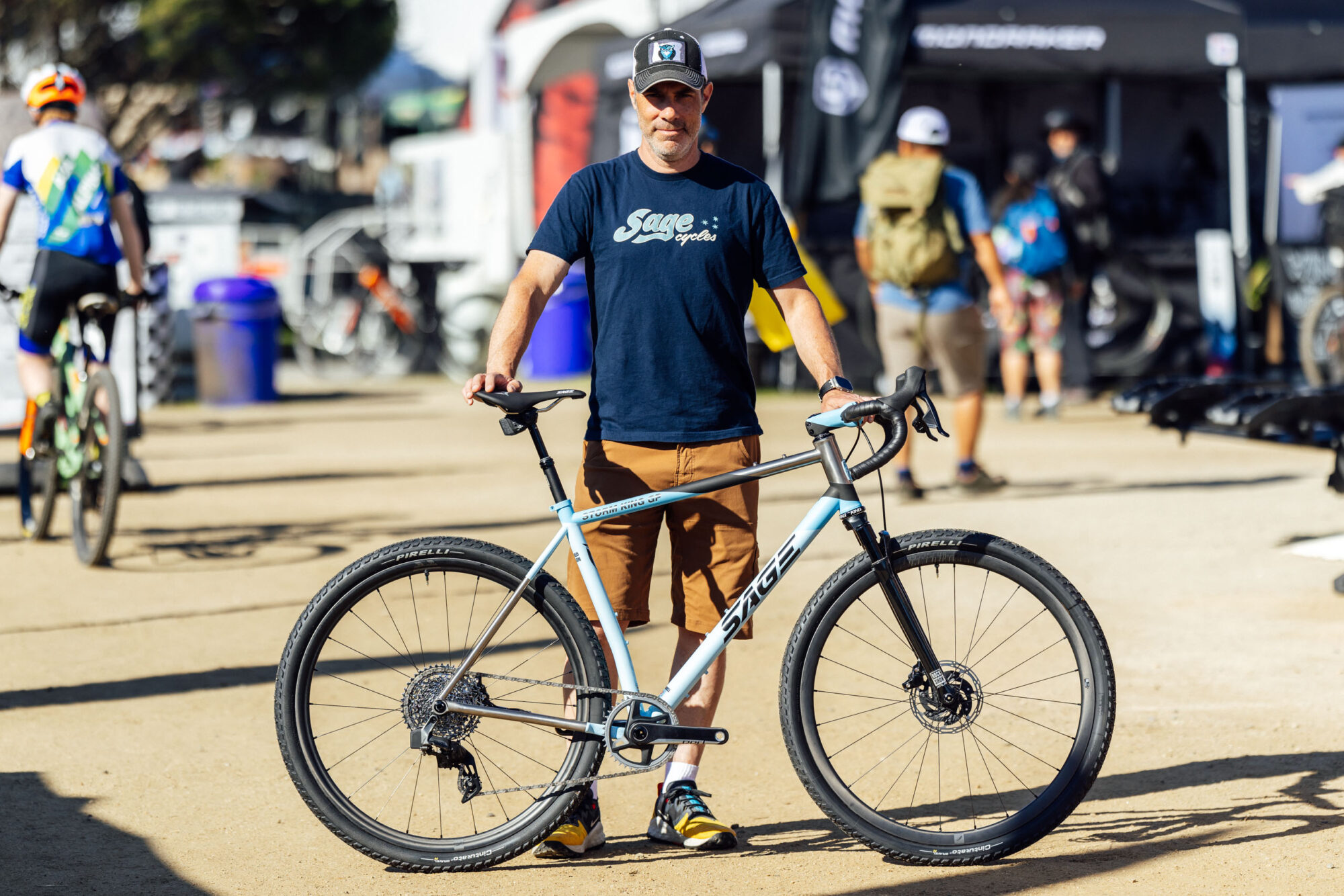
Throughout the early 2000s, Rosen balanced his role as an analyst at Nike with his pursuit of road and eventually cyclocross racing. However, the economic downturn of 2009 brought an unexpected change. While facing unemployment, Rosen also found newfound freedom. Despite the setback, he seized the opportunity to immerse himself in the bicycle industry, which ultimately led to the birth of Sage Cycles in 2012. “It was the best thing that could have happened to me as it allowed me to step back from the grind of working a desk job and think about what was important to me. I decided that I wanted to get into the bike industry and was able to get a job in sales and marketing for a company that made internally geared hubs. That gave me my first real exposure to the industry. I went to Sea Otter and Interbike those years and instantly felt like I had found my people,” Dave added.
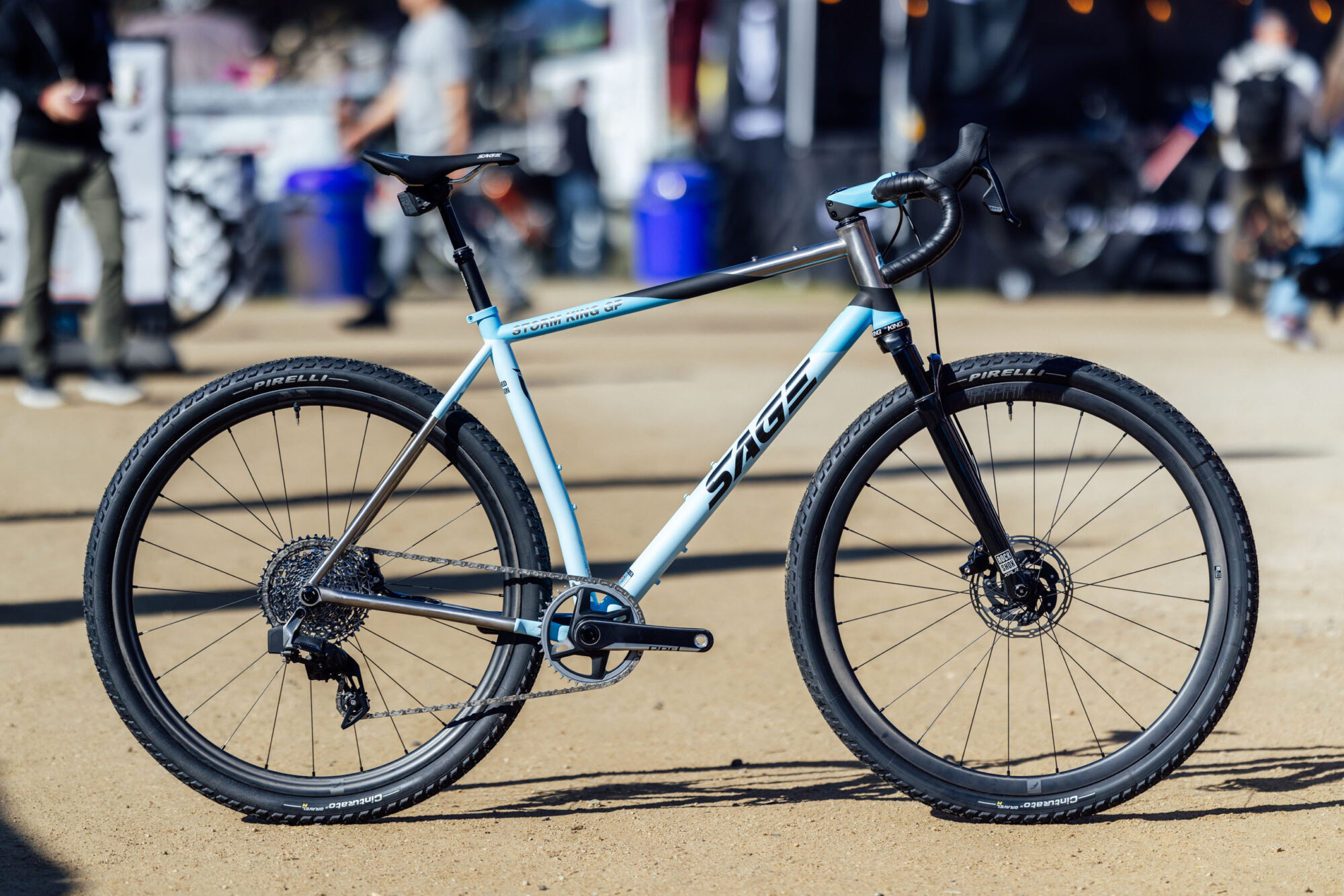
Dave was initially focused on creating affordable titanium bikes, but realized he had to adjust his approach when outsourcing production to China yielded inconsistent frame quality results. His ultimate goal was to make bikes that could be used for a lifetime and still be relevant 20 years from now. Since 2014, Sage has proudly manufactured all its titanium bikes in the United States.
On the heels of several road bikes and the Barlow, an “all-road” style gravel bike, the Storm King is the brand’s second drop-bar bike. It’s named after a flowy singletrack trail in Oregon that happened to be the final stretch of a big endurance gravel race. The name clicked as Dave was riding in that race and thought his prototype bike was perfect for that particular stretch of trail. The Storm King was designed for bigger tires and more comfort than the Barlow. The Storm King GP is another step in this lineage. The big difference between the GP and the version two Storm King Jess reviewed is that the GP is suspension corrected for gravel suspension forks. The fit numbers of both bikes are quite similar as the geometry was adjusted to accommodate the taller fork and how that changes the overall body position.
Beyond that, the GP now has the new Transmission-compatible 3D-printed dropouts. The regular Storm King now gets them as well, but this is definitely a new development since we plugged it in the prior press release. As Dave summed it up, the changes made are based on perfecting these bikes with his motto of I could do it better always motivating him, “evolution needs to happen not because you are staying with the trends for the sake of staying with the trends, but because of how and where bikes are being ridden. If MTB trails are getting more aggressive, then the geometry of the bike needs to slacken. If gravel races are getting more demanding, then bigger tires and suspension is not a bad idea.”
Dave’s Sage Powerline
Sage’s recently updated downcountry hardtail was originally inspired by the Powerline Trail at Mt. Hood Ski Bowl, a segment of an XC race circuit featuring a steep, challenging descent littered with boulders where most short-travel XC race bikes are a little undergunned. The third-gen Powerline was revamped with a more aggressive geometry to handily ride trails such as this one. “What was important to me was that while I slackened the head tube angle to 66°, I maintained the same reach and stack numbers as the previous generation bike. Everyone loved the way that it rode, so I wanted to keep that fit that people knew and loved but make the bike more capable in the rough stuff or when loaded down with bikepacking gear,” Dave mentioned when describing the geometry changes.
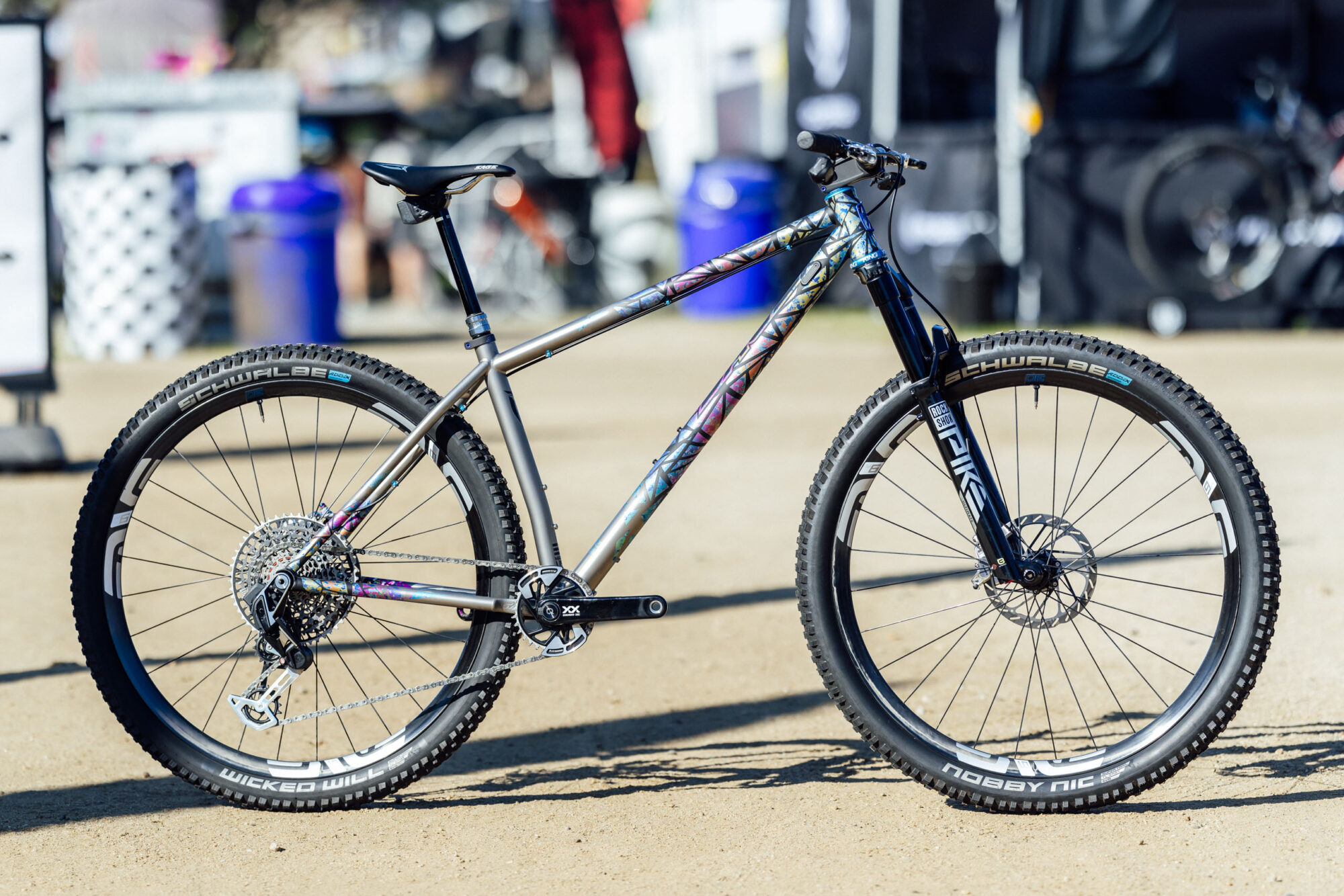
This iteration of the Powerline also received the new 3D-printed chainstay yoke to replace the driveside CNC’d plate. The new yoke is curvier and allows a bigger chairing and larger tires. It now clears a 34-tooth chainring and increases the tire clearance from 29 x 2.5″ to 2.6″ without requiring any changes to the chainstay length. It also provided the means to route cables through the stays. The brake and shift cable guides previously located on the top tube and seatstays have been removed. Now, all control housing, including the rear derailleur shift cable, rear brake housing, and dropper post cable, are routed internally through the downtube and chainstays of the frame. The Powerline also gets the new 3D-printed dropouts—the GP version are for flat mount brakes while the Powerline are for post mount.
This particular Powerline is Dave’s personal bike, and the paint scheme was an homage to his dog who passed away in recent years. You can see the silhouette underneath the head badge. To learn more about the Storm King GP and Powerline, head over to SageTitanium.com.
Truemarmalade’s Loaded Omnium
This isn’t the first time we’ve posted about the epic cargo bike adventures of Erik Binggeser (aka Truemarmalade). However, this is the first time any of us have met him in person. As such, it was great bumping into Erik at Sea Otter to hear his latest stories and grab a few photos of his rig. For those just tuning in, here is a brief synopsis. Following the COVID-19 pandemic, Erik sold most of his Earthly possessions and nixed his normal routine by pushing the pause button on his career as a graphic designer and embracing a nomadic existence in a van. Roughly a year later, he took this minimalist lifestyle a step further, exchanging the van for a titanium Omnium Cargo bike. Since then, he’s traversed the United States, meticulously pedaling its diverse locales one street at a time. In the process, Erik managed to ride roughly 20,000 miles in 2023 alone, and, according to data from Wanderer, he saw more miles on new roads than anyone else on the planet last year.
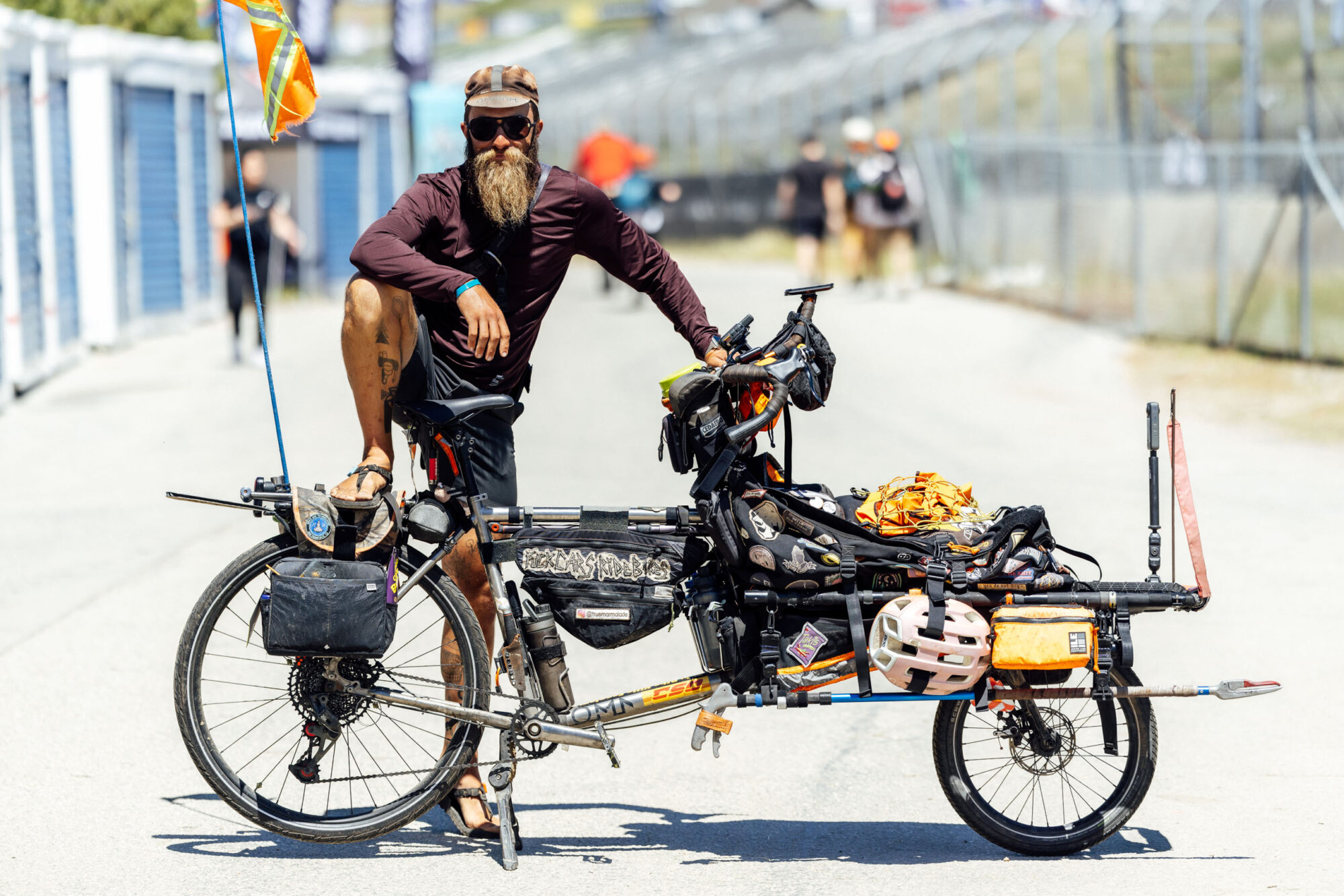
When I caught up with Erik, he was rushing around the Sea Otter expo talking to vendors. He was showing companies what happens when their components are pushed farther than they’re normally tested. “POC hasn’t ever seen a helmet as faded as mine. Crank Brothers didn’t know what the Stamp looked like after 20,000 miles until I rolled through. Wolf Tooth begged me to send them my old chainring for their wall of shame after I get a new one.” One of Erik’s favorite aspects of touring on this bike is how it’s been an untraditional testing environment. The only things that he still has that he started the trip with are the Wren bars, Gevenalle shifters, and TRP brakes. Everything else failed, fell apart, or broke at some point.
Erik had just ridden to Sea Otter from San Francisco. After crossing back into the US from a trip through Mexico in early March, he spent some time in San Diego, L.A., then rode over Grapevine to Bakersfield, followed by some time in Fresno. After that, he took Patterson Pass to the ferry and spent a week in San Francisco before making the two-day ride down to Sea Otter.
His bike clearly looks like it has many miles on it. The current cockpit consists of a Wren Perseverance Adventure handlebar, a Redshift suspension seatpost, Brooks C-19 Cutout saddle, and Gevenalle friction shifter levers wired to a 12-speed SRAM GX derailleur and cassette. The bike is fitted with a Cane Creek eeWings crankset and a Hellbender 110 bottom bracket, Crank Brothers pedals, a Wolf Tooth Components chainring, TRP Spyre brakes, and a stock Omnium dynamo wheelset with a Continental rear tire and a Schwalbe up front. “I usually run Schwalbe front and rear, but the only rear tire I could find in Bakersfield was a Continental after shredding my sidewall bombing down I-5,” Erik added.
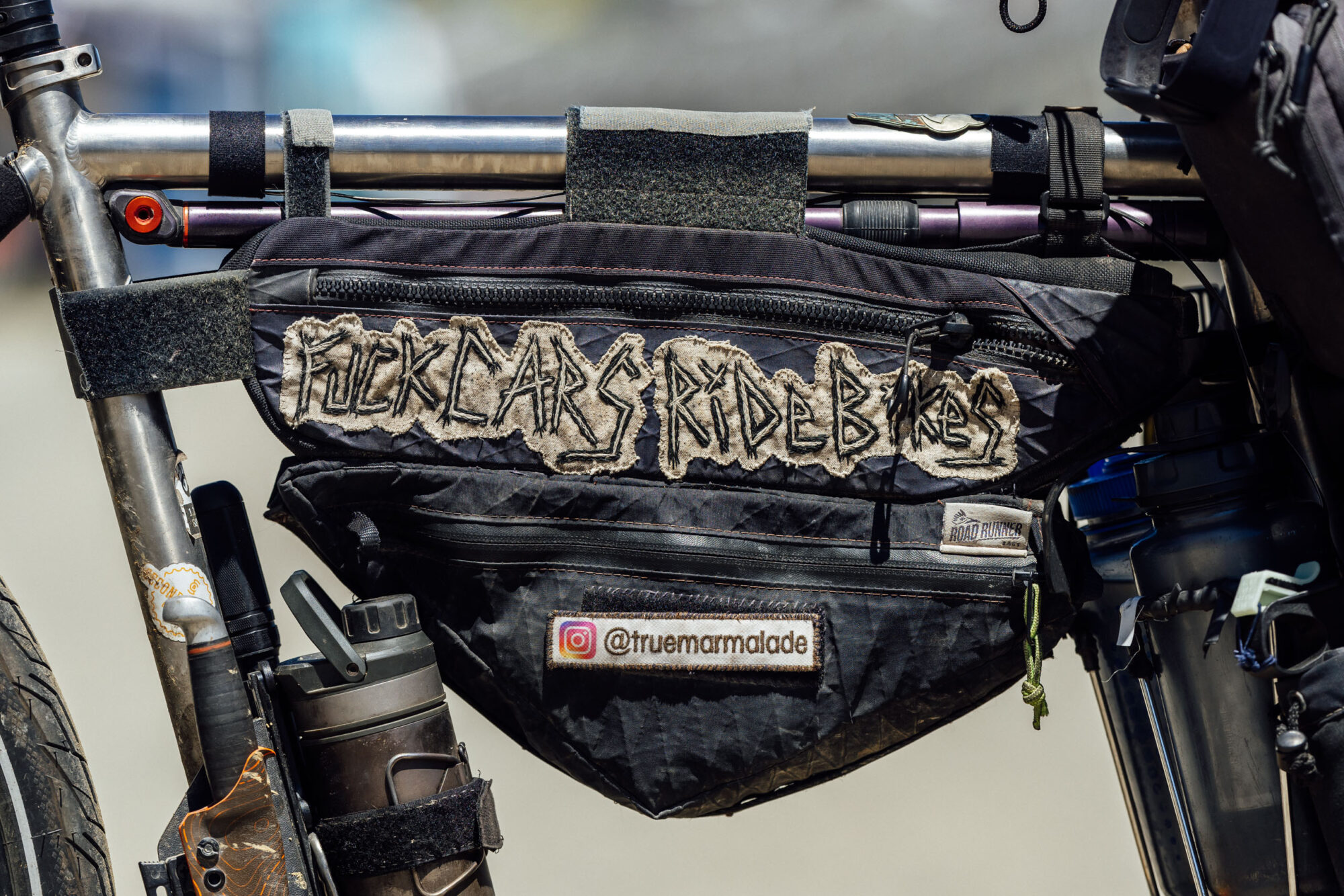
Perhaps the most enchanting thing about Erik’s rig was his collection of patches. He says he has “more than 50 but likely less than 100.” His favorites include Booty worship, Fresno capybara, the duck smoking a dart, cargo bike Antifa, and baby’s coffee. All those are great, but I really liked the Takis patch, too.
From Sea Otter, Erik is heading north with the goal of trying to get to Vancouver by May 15th. He’ll then spend a few months seeing friends in the PNW after hopefully making many new ones along the way. Bon voyage, Erik! Hopefully we can spend a little more time together next time we meet.
Further Reading
Make sure to dig into these related articles for more info...
Please keep the conversation civil, constructive, and inclusive, or your comment will be removed.






